The Best Non-Toxic Diapers Guide (Updated 2023)
Written by:
Maia James
10/12/2023
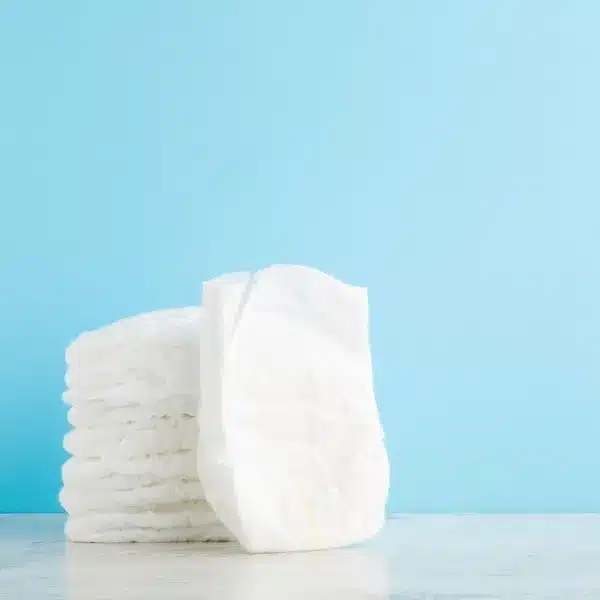
Updated: 02/28/2024
Looking for a different guide? Browse them all HERE.
I wrote this Best Non Toxic Diapers Guide for the first time when Felix was still wearing them! My original introduction to this section read something like, “Sure, we all know we should use cloth diapers, but how realistic is that, especially here in New York City where many of us don’t even have washing machines? Thank God for these biodegradable diapers from Seventh Generation!”
This was back in 2010, and I was using cloth diapers about 25% of the time (and my husband was using them never). After doing the research for this guide, I came away realizing that there really isn’t a truly “green” way to use disposables. So I started putting Felix in non-toxic disposable diapers only at bedtime or for long car rides and stopped using the Seventh Generation disposables completely.
But I had many relapses before potty training was done, and when my second son was born in 2013, I didn’t even attempt cloth diapers. My excuse: a busy business and two children. At least this time I used diapers I felt better about (see “The Best Stuff,” below).
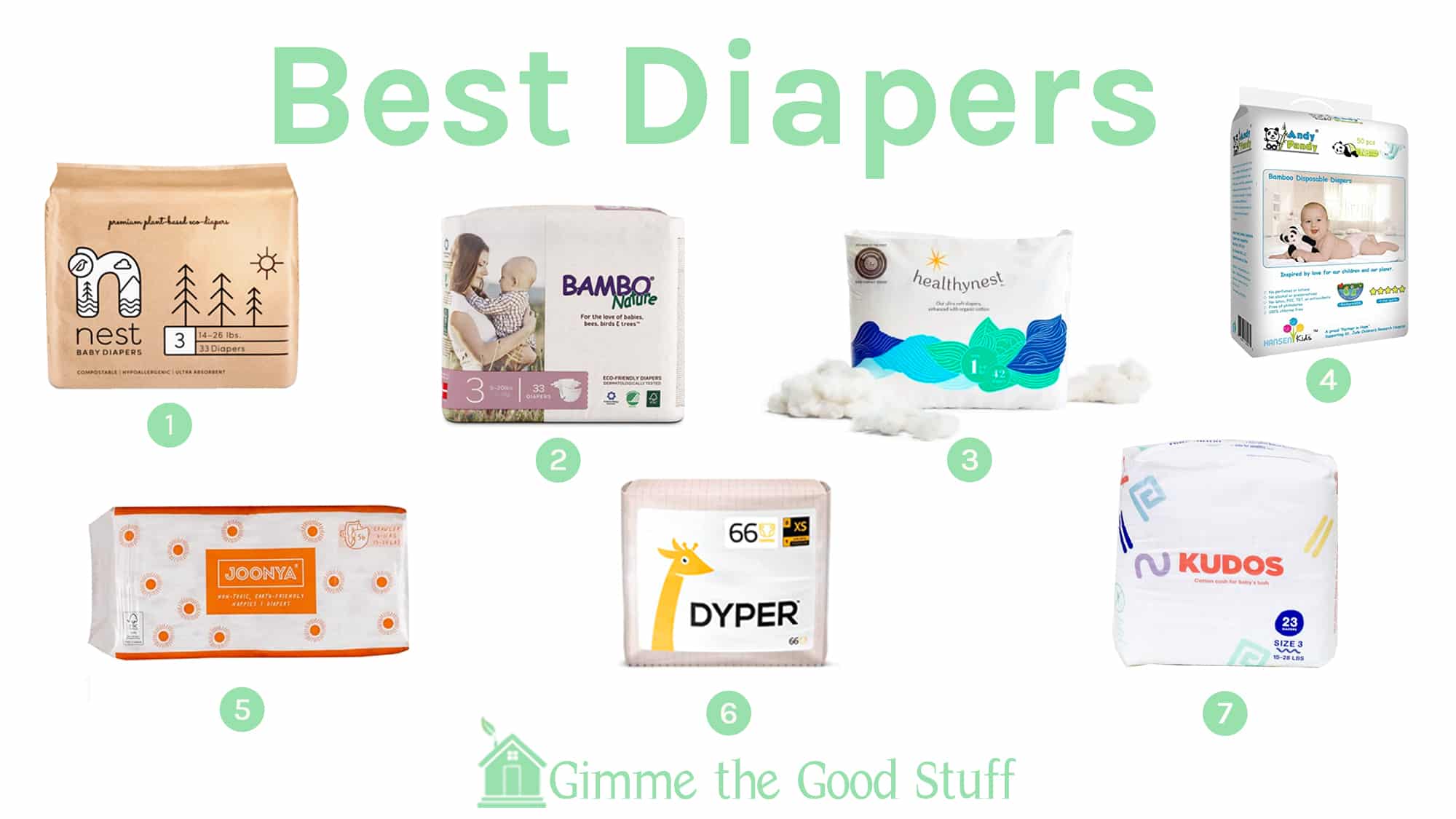
1. Nest/ 2. Bambo / 3. Healthybaby / 4. Andy Pandy / 5. Joonya / 6. Dyper / 7. Kudos
Updated Biodegradable Diapers Guide
In 2019, nearly a decade after I first published this guide, I hired Dr. Michael Hopkins, PhD, to revisit the guide and update it with some new brands you’ve been asking about. And now in 2023, we’ve given it another update to add even more brands of Earth-friendly disposable diapers (plus a bunch of Sneaky brands!).
Our Research Process
As a scientist, Dr. Hopkins is well-equipped to read peer-reviewed studies and come away with a deep understanding of the nuances of the potential risks from various diaper materials, from chlorine to SAP to adhesives (more on all this later).
After deciding on the appropriate criteria for what would make brands Best, Good, Bad, or Okay Stuff, he made a many-columned spreadsheet and populated it with the list of diaper brands you guys asked us to review.
For each brand, Michael calculated affordability, studied reviews on diaper performance, and double-checked to make sure that all ingredients and materials lists were accurate from the first version of this guide (in the case of Honest Diapers, for instance, the ingredients changed in 2018).
Dr. Hopkins’ final (and the most time-consuming!) step was contacting diaper manufacturers to investigate their use of about phthalates, fragrance, chlorine, latex, and the exact materials in the top-sheet and back-sheet of each diaper.
I asked him to find out if the diapers use bamboo or plastic (and in what ratios), if they use traditional SAP or plant-based fluff, what their adhesives are made of, and what percentage of so-called compostable or biodegradable diapers actually biodegrade.
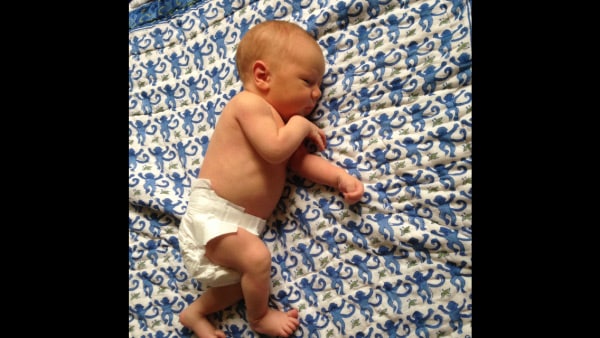
Once he gathered all of this information, we were able to plunk all 40ish reviewed brands into a Best, Good, Okay, Bad or Sneaky Stuff category, which you can review at the bottom of this post.
Our Favorite Disposable Diaper
Nest Biodegradable Diapers
This brand offers a 64% biodegradable diaper that gets excellent customer reviews. It features a bamboo top sheet and back sheet, and its core is comprised of a combination of fluff and SAP. These diapers are free of phthalates and the brand was super quick to answer our questions.
Price per diaper: $0.50 to $0.68
Are disposable diapers toxic?
This is the question I am asked more than any other about diapers, so let’s start here. Do even the worst disposables really pose a risk to the baby wearing them? Or is this mostly an environmental issue?
The short answer is, yes: diapers can pose a risk to the baby wearing them. Here are our two biggest health concerns with disposable diapers:
- The phthalates that may be used not only in the plastic components of diapers but also in the glues, synthetic fragrance, and dyes.
In a recent study out of South Korea, four leading diaper brands (as well as several brands of sanitary pads) were shown to all contain varying amounts (and in some cases, very high levels) of phthalates.
If you’re a regular reader, you already know how bad phthalates are, and since they directly disrupt hormones, they are definitely not something you want anywhere near your children’s privates!
In addition, phthalates proved to be the hardest ingredient to suss out during our investigation. A surprising number of “non toxic” or “sustainable” diaper brands don’t actually make any claim about phthalates, and you’ll see in our reviews below that we note whether each brand is “phthalate-free.” - Allergens and irritants. TBT, parabens, latex, and more are often found in diapers. These will most likely be present in fragrance, lotions, and dyes.
While this is the least sensational potential risk, good old-fashioned diaper rash is probably the greatest concern for most babies wearing disposable diapers.
The best way to avoid diaper rash (or a more serious reaction) is to avoid any disposables with dyes, fragrance, and lotions, and to look for diapers that explicitly state they are free of latex, parabens, and TBT.
Do we need to worry about bleaching/dioxins in diapers?
This is another question I get a lot, and it’s certainly relevant from an environmental perspective. The organochlorines present in the effluent produced by paper mills during the bleaching process are a well-documented environmental pollutant.
However, in terms of a danger to the baby, you should know that the level of dioxins present in disposable diapers is:
- Comparable to that found in cotton (cloth) diapers.
- Thirty thousand to 2.2 million times lower than the average dietary dioxin exposure resulting from “low level contamination of the food supply.” (From this peer reviewed study using commercially available diapers purchased in and around San Francisco.)
In other words, we are exposed to tens of thousands of times more dioxins from our food supply than the trace levels found in chlorine-bleached diapers. Does that mean you should buy bleached diapers? No, definitely not—their production is really bad for the planet. But if the hospital puts your newborn in one, don’t worry; it’s not going to harm her.
Total Chlorine Free (TCF) versus Elemental Chlorine Free (ECF)
If you’ve been educating yourself on the best nontoxic diapers/biodegradable disposable diapers, you’ve probably heard that ECF diapers are basically Sneaky Stuff and that you MUST buy only TCF diapers.
(Quick primer: ECF means bleached with chlorine dioxide instead of elemental chlorine. TCF means bleached using any chemicals other than chlorine, chlorine dioxide, or hypochlorite.)
We are probably the only “green bloggers” saying this, but the distinction between TCF and ECF is totally not important.
Here’s why: as we just said, the use of chlorine in pulp and paper mills is really an environmental issue, not a health and safety issue. Yes, ECF bleached diapers might sometimes still contain trace amounts of dioxins, but we are talking about levels that are several orders of magnitude lower than the levels of dioxins we are all exposed to by simply eating food.
And here’s why it doesn’t even matter from an environmental standpoint: Although the waste products of TCF pulp is technically “cleaner” than ECF pulp, TCF produces a lower yield (it takes more wood pulp and energy to produce the same amount of finished product), effectively canceling out the benefits over ECF.
Moreover, the environmental impact of ECF versus TCF bleaching depends on the practices and procedures of the individual paper mill and how the waste products are handled. Recent reports have concluded that the theoretical benefits of TCF versus ECF bleaching have not been realized in the real world and that there is no appreciable difference between ECF and TCF. Scratch that one of your worry list!
Non Toxic Incontinence Diapers
Abri-Form Junior is Abena’s line of non toxic disposable incontinence diapers, designed specifically to fit those between 5 and 15 years old that suffer from uncontrolled urination.
What makes a diaper Good Stuff?
I hope all of this helps you guys understand a little more about what makes a healthy baby diaper that’s friendly to the environment. Still, there are dozens of “green, “biodegradable,” or eco friendly diapers on the market; how can we know which ones to buy?
In order for a disposable diaper to be “Good Stuff,” it must:
- Be free of artificial fragrance, dyes, and lotions, all of which have the potential to contain irritants/allergens/toxins and simply aren’t necessary in any diaper. This disqualifies some otherwise decent choices, such as the inexpensive (but, unfortunately, lotion-infused) Aldi diapers.
- Explicitly state that it is free of phthalates, since this cannot be assumed, unfortunately. But why?
When we talk about the chemicals and additives in diapers, we’re mostly talking about substances that can cause harm to your baby or the environment (often both). Even if these substances don’t harm your baby directly, anything that harms the planet is ultimately harmful to humans, too!
In simpler terms, a non toxic diaper won’t harm plants or animals at any point before, during, or after it’s produced.
Most diapers harm the environment before they even reach store shelves. Every chemical, from dioxins to polymers, ends up in the water supply. And unfortunately, from there, these chemicals can enter the food chain in a few ways.
Most of the time, such toxins are consumed by hungry marine life, which is consumed by larger marine life, which is consumed by humans. Scientists have already found that chemical-derived microplastics have the potential to change human DNA.
These two criteria are the bare essentials if your only concern is the safety and well-being of the diaper user. (But I know you all are better than that!)
Given the significant environmental impact of disposable diapers, a “Best Stuff” diaper also must:
- Be either Elementally Chlorine Free (ECF) or Totally Chlorine Free (TCF). For the reasons explained above.
- Be free of petroleum-derived plastics. There are now enough bamboo and other plant-based diapers on the market to eliminate any brand that uses petroleum in its production from the Best Stuff category, even if it poses no real risk to the baby wearing the diaper. This is a happy change from when we wrote the first version of the Gimme the Good Stuff Disposable Diapers guide.
Best Diapers for Sensitive Skin
Kudos is our pick if your baby is prone to rashes or eczema. It’s the first disposable diaper to have 100% cotton touching your baby’s skin, and no plastic. Cotton is naturally soft and hypoallergenic, so it is less likely to irritate sensitive skin.
Do biodegradable diapers exist?
By virtue of using plant-based rather than petroleum-based ingredients, the diapers that we’ve labeled as Best Stuff are inherently compostable or biodegradable to varying degrees. Some of these brands supplement with a “bio-based SAP” or with cornstarch in the absorbent core to limit the amount of traditional SAP used. The other core component, “fluff,” is wood pulp (cellulose) that undergoes a more traditional bleaching process.
Many people criticize diaper brands that market themselves as “biodegradable” or “compostable” because:
- Traditional landfills are inherently non-conducive to biodegradation due to an absence of oxygen, soil, and microorganisms.
- Compostable is only relevant when you have a way to compost where you live (keeping in mind that human feces should not be composted!), and anyone who is planning to compost their diapers will need to make sure they understand how to do this properly.
Dr. Hopkins and I agree that, despite these concerns, there are still valid reasons to choose a “compostable” or “biodegradable ” diaper brand. Namely, a reduction in use of petroleum on the production end, as well as sending a message to the industry about the demand for more environmentally sustainable consumer products.
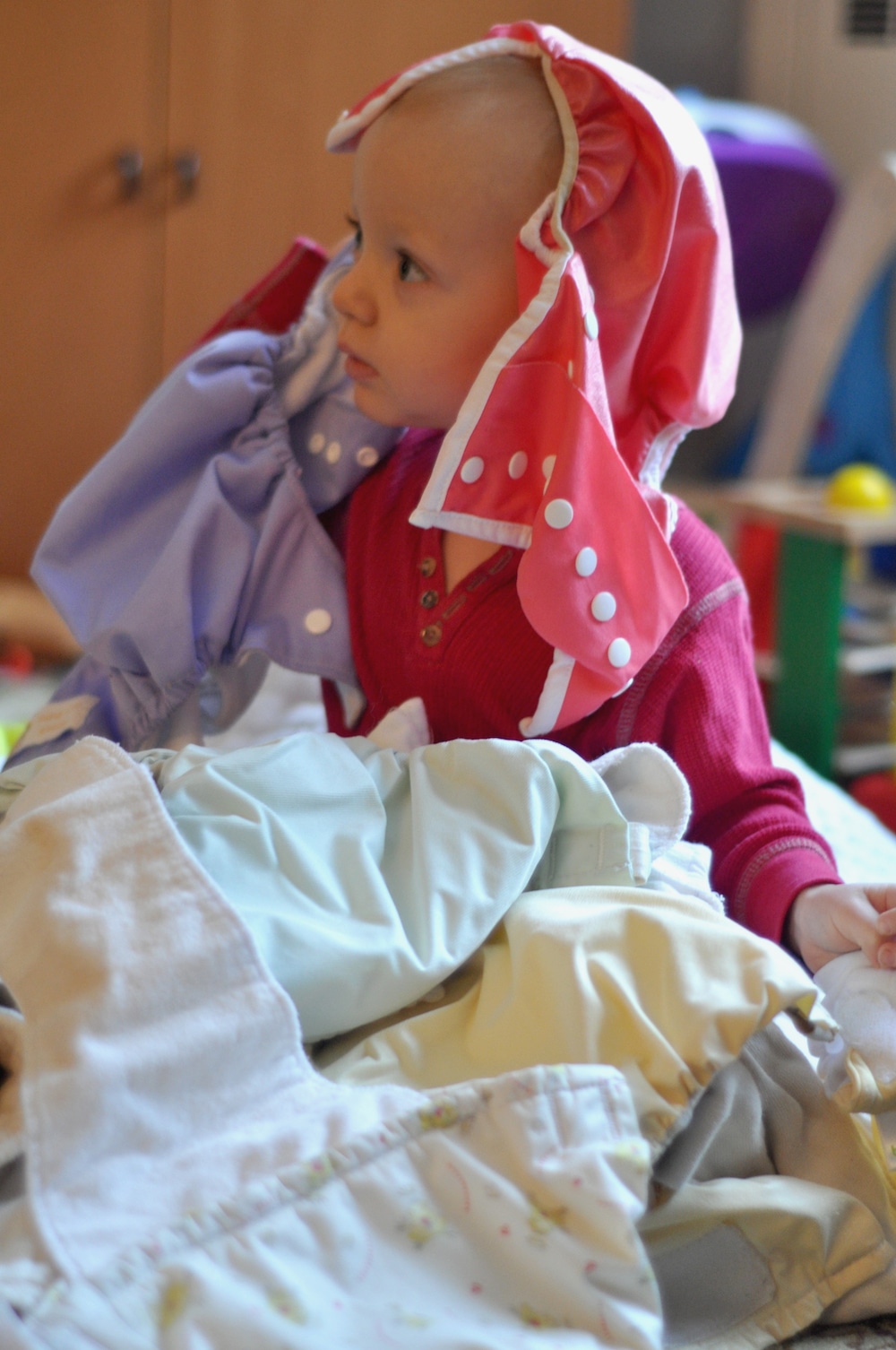
Reasons to Switch to Cloth Diapers
Before I tell you which are the very best disposable diapers, here’s why you shouldn’t use any of them, even the ones I can sell you from our online store:
- Conventional plastic diapers contain small amounts of dioxin—a byproduct of the bleaching process. As discussed above, this doesn’t pose a risk to your baby, but it’s really bad for the environment.
- Even if you use non toxic disposable diapers, you’re probably familiar with the little gel clumps that sometimes stick to your baby’s skin when you wait too long to change her. Known as SAP (Super Absorbent Polymer), some people worry about it because it was linked to toxic shock syndrome when it was in tampons. While I don’t think it causes a health risk to babies, it is not biodegradable, and thus not an earth-friendly choice.
- A Greenpeace study found the hormone-disrupting TBT (tributyltin) in many diaper brands.
- I know we are all bored with the landfill stats, but the fact remains that a disposable diaper can take as long as 500 years to decompose.
- In response to the popular misconception that cloth diapers are just as bad for the environment as disposables (a myth propagated by a study funded by Procter & Gamble), an independent report found that disposable diapers produce more than 50 times the waste of cloth diapers and use twice as much water and triple the energy.
What about cloth diapers with flushable liners?
I didn’t use them myself, but tons of readers and friends are devoted to the so-called “hybrid diapers” with the flushable liners.
The truth about these products is that they aren’t even really flushable. All flushable products must either be initially small enough to flush (which the liners are not) or dissolve when exposed to water. These liners obviously don’t dissolve when wet or they would be unsuitable for their purpose!
In other words, it would be impossible to manufacture a liner that is both flushable and effective.
While they do break down eventually, it’s not quick enough to negate their negative impact on the environment—or your bathroom pipes. Not only will they clog up home plumbing and septic systems, but they linger in sewers and other waterways. Because of the aforementioned conditions in landfills, they may be there for years.
The consensus? Hybrid diapers are an improvement over disposable diapers, but they still are not as good as cloth diapers. Our favorite cloth diaper brand is Esembly. Use code GOODSTUFF10 for 10% off.
Best Stuff
Nest Biodegradable Diapers
This brand offers a 64% biodegradable diaper that gets excellent customer reviews. It features a bamboo top sheet and back sheet, and its core is comprised of a combination of fluff and SAP. These diapers are free of phthalates and the brand was super quick to answer our questions.
Price per diaper: $0.50 to $0.68
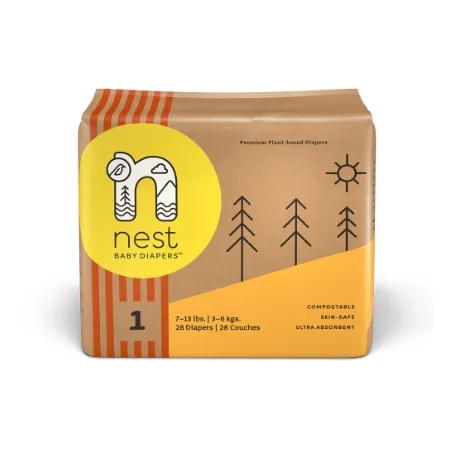
Aleva Naturals Bamboo Diapers
These feature a bamboo top-sheet and back-sheet, and a fluff and plant-based SAP core.
Price per diaper: $0.53
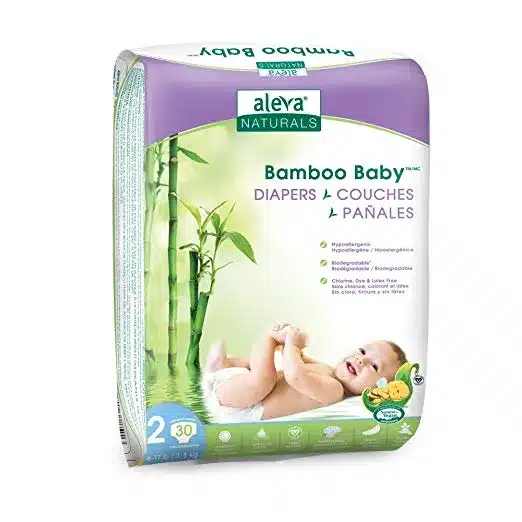
Andy Pandy
Andy Pandy diapers are 85.6% biodegradable, with a bamboo top- and back-sheet, and a fluff/sap core. A lot of you are fans of this diaper’s performance.
Price per diaper: $0.54
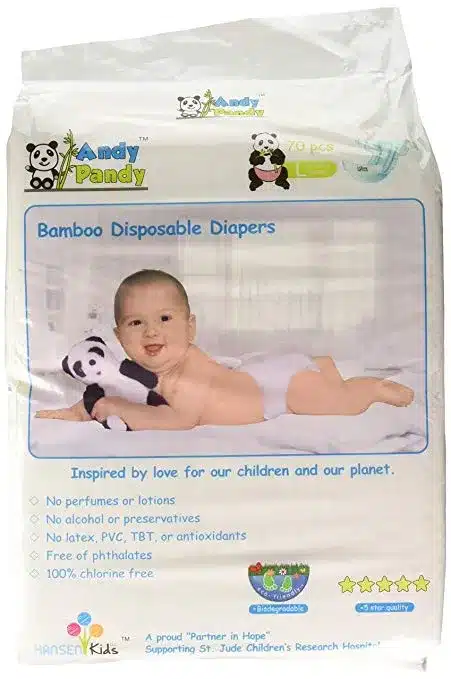
Dyper Diaper Subscription
Like the other brands on this list, Dyper diapers use a bamboo top- and back-sheet. But Dyper is unique not only because it’s purchased via subscription, but also because it uses Sumitomo SAP for part of its core, along with fluff. Our research suggests that Sumitomo SAP (from Japan) is the very best traditional SAP on the market, so you can use less of it for the same results.
We also like Dyper because the company purchases carbon offsets and uses biodegradable bags and nontoxic cardboard inks for packing and shipping. They claim you can compost these diapers at home.
Overall, Dyper is probably the most affordable of all the Best Stuff. Price per diaper: $0.32 to $0.46. (Get 50% off your first monthly box here.)
ECO Boom Bamboo Baby Diaper
This compostable diaper has a bamboo top-sheet and back-sheet. The core is a combination of fluff and SAP. ECO Boom gets extra points for its non-toxic adhesives. These diapers are free of PVC, TBT, alcohol, and preservatives.
Price per diaper: $0.40
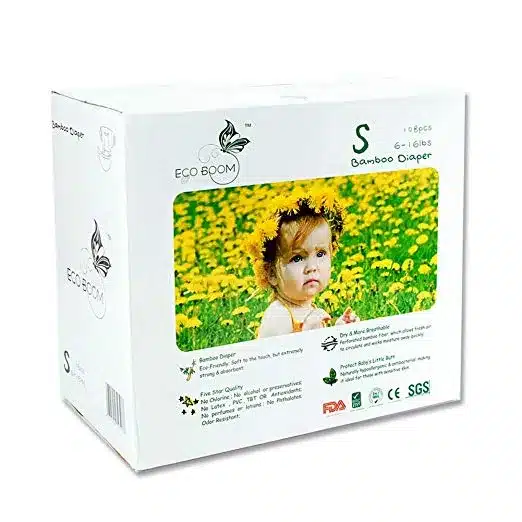
Happy Little Camper Natural Baby Diapers
These diapers are OEKO-TEX certified, with plant-based materials including wood pulp and a cotton blend for top- and back-sheet. They are TFC, with heavy-metal-free dyes. Made in Europe. I don’t know anyone who uses them, so I cannot speak to their performance. (Please comment below if you have!)
Price per diaper: $0.36
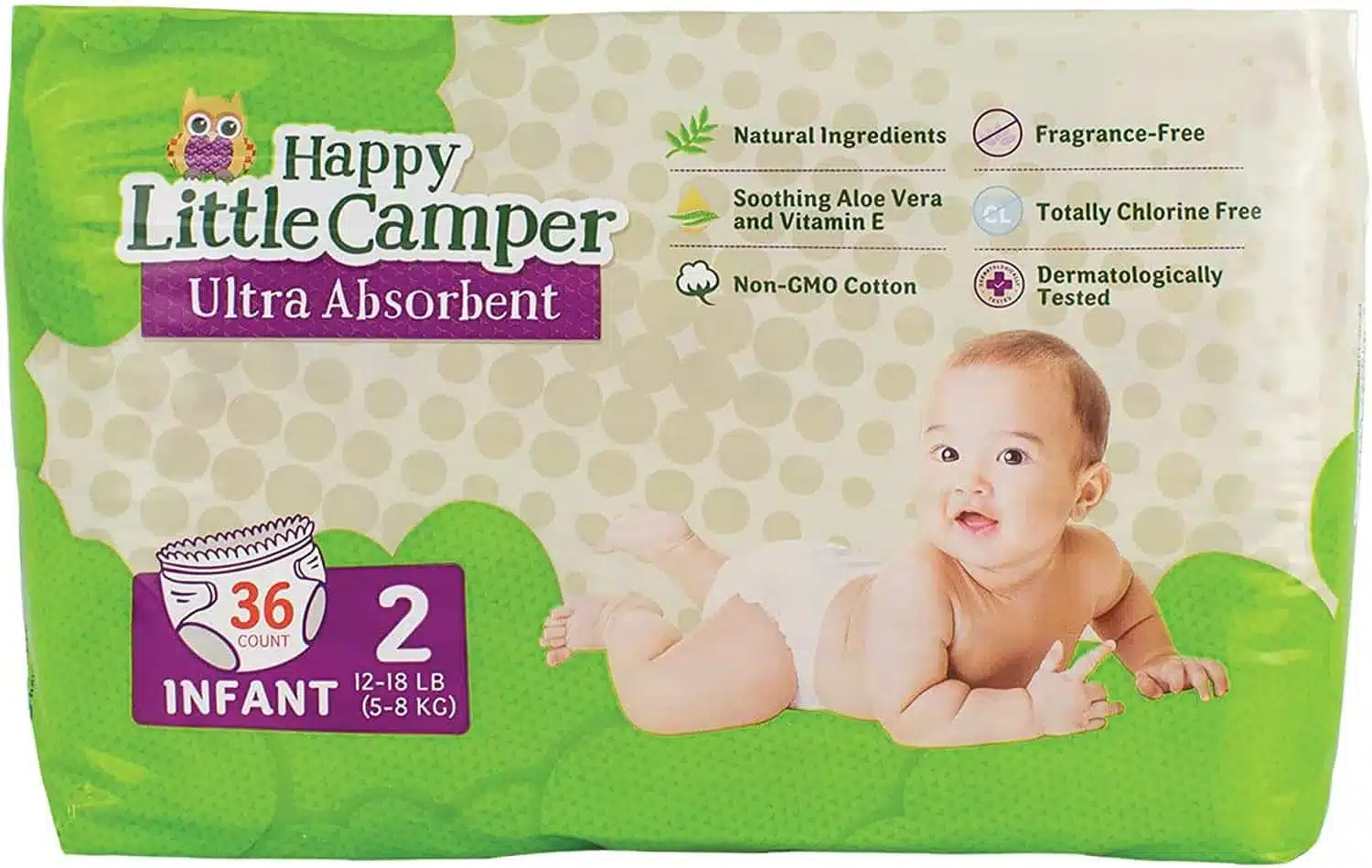
Healthybaby
These are the first diapers to be verified by EWG, and friends who have used them say they perform as well as the most toxic of conventional diapers. This is because they are engineered with proprietary “magic channels” and flash dry technology to instantly wick moisture away from the skin and provide better leak protection, even overnight.
Healthybaby’s diapers’ core is SAP and wood pulp–which receives bonus points from us for being 100% sourced from sustainably managed forests.
Healthybaby diapers are Totally Chlorine-Free (TCF), and are explicitly free of parabens, phthalates, fragrances, and optical brighteners. They are manufactured using renewable energy and are the first and only diapers to contain organic cotton. Healthybaby is a certified B Corp, and the diapers come in a paper rather than plastic package.
The top and bottom sheets of these diapers contain some plant-based polyethylene and polypropylene (inert, non-leaching plastics).
Healthybaby has especially strong certifications, which in addition to EWG include Oeko-Tex.
Finally, Healthybaby is more transparent about every single ingredient and material in every product they make than any other brand we’ve reviewed. All materials are third-party tested for safety, which no other brand–including all of the ones claiming to be organic and biodegradable–can say.
Price per diaper: $0.50 with subscription
Use code GIMME15 for 15% off, including subscriptions.
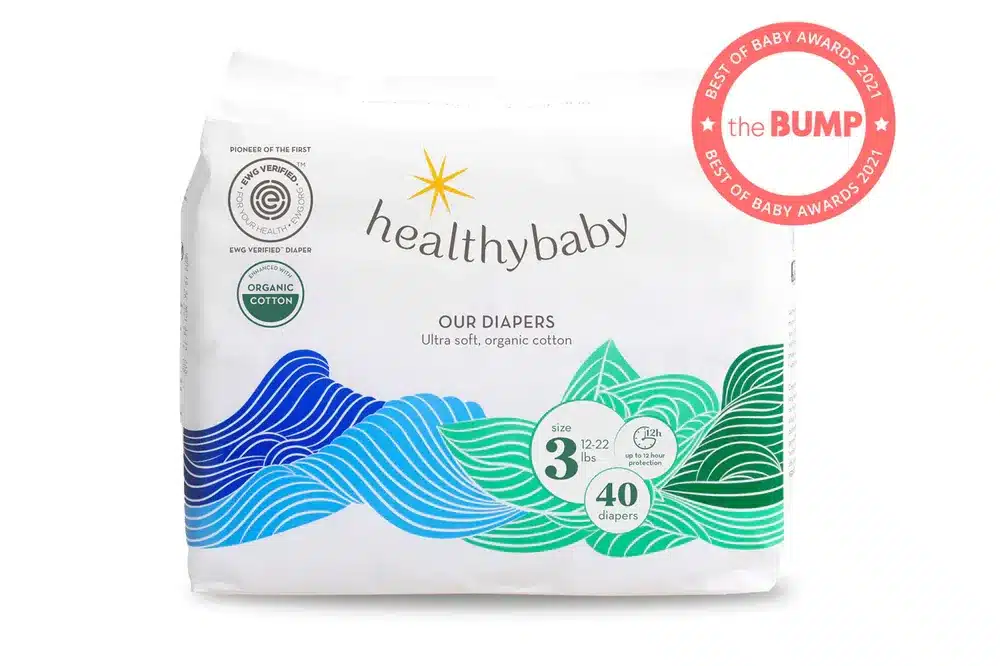
Joonya Earth-Friendly Diapers
Made in Denmark, and the backsheet and topsheet of Joonya diapers are made from sugarcane and corn.
Joonya’s diapers are TCF, and the core contains wood fluff from FSC certified forests. These diapers are explicitly free of phthalates, chlorine, latex, and heavy metals. Joonya diapers passed independent chemical testing performed by Eurofins Laboratory. It’s also certified by Nordic Swan, the official stamp of safety for products made in Nordic countries.
Price per diaper: $0.51
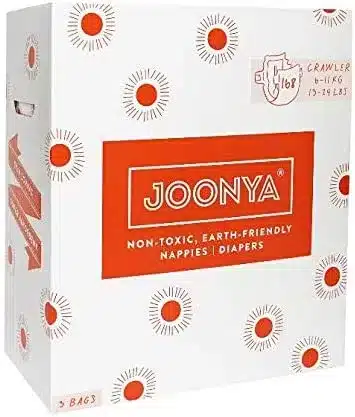
Kudos Natural Diapers
Dr. Hopkins was really impressed by Kudos. These diapers contain two components made of petrochemical plastic–in the the waistband (they say it’s soon to be replaced with plant-based plastic) and the“barrier film” which is listed as a breathable polyethylene. One notable difference between Kudos and other Best or Good brands is that they are the only manufacturer to use cotton for the top sheet, rather than bamboo. They (rightfully) point out that the process of turning bamboo into fabric is environmentally unfriendly, as it releases carbondisulfide and hydrogen sulfide as byproducts. Dr. Hopkins says: “I give them a pass on the barrier film and waistband based on how much effort they are putting into making smart choices given the options available and not just green-washing.” Read our full review of Kudos here.
Price per diaper: $0.31 with subscription
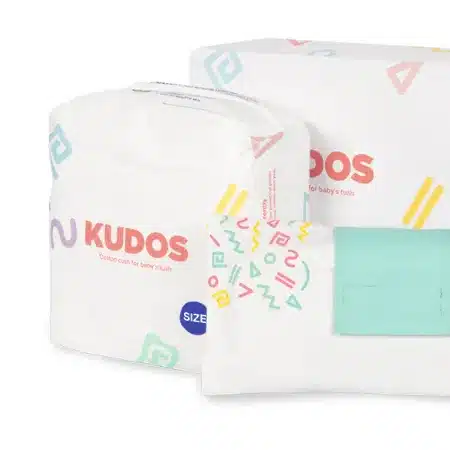
Little Toes Biodegradable Bamboo Diapers
Like others in this category, Little Toes feature a bamboo top-sheet and back-sheet, a fluff and SAP core, and are free of alcohol, PVC, TBT, dyes of any kind, and preservatives.
Price per diaper: $0.64
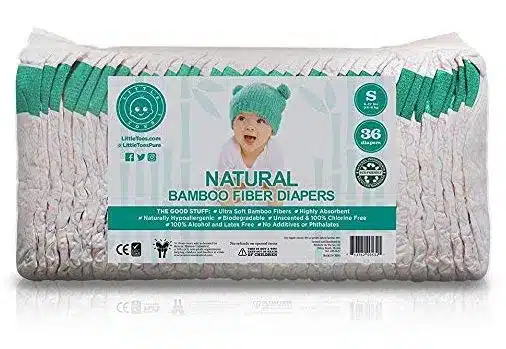
Good Stuff
The following brands all still count as “Good Stuff” because they are Chlorine free (ECF or TCF), dye, fragrance, lotion, paraben and latex free and explicitly phthalate free. However, the top-sheet and back-sheet of these diapers are made mostly of petroleum-based plastics, so based on our new standards, we cannot call them Best Stuff.
Attitude Disposable Baby Diapers
I was surprised when Michael told me Attitude made the Good Stuff list! The top-sheet and back-sheet are made from a “cellulose polymer,” and the core is made of cellulose fluff, SAP, and “Bio-SAP.” Attitude claims that this is a 90% biodegradable diaper — the 10% is the plastic fasteners and the SAP portion of the core. On the downside, reviews suggest that these diapers are leaky and don’t hold closed as well as others on this list. We also never heard back from them about the exact materials in their polymer, which is why we’ve listed them as Good rather than Best Stuff.
Price per diaper: $0.99
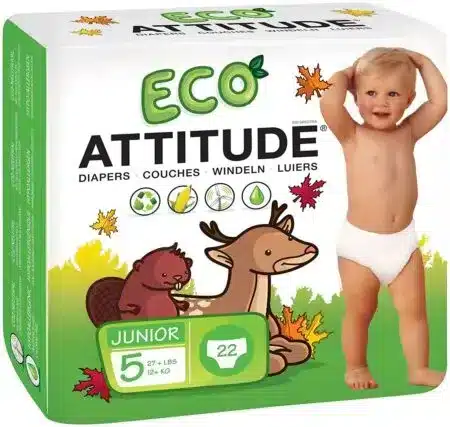
Bambo Nature Diapers
Bambo is highly regarded among green diaper reviews and is often noted for its certifications, such as “Nordic Ecolabel” and “Forest Stewardship Council.” The cellulose fluff is sustainably sourced, and combined with SAP for the core. Bambo diapers are made of around 75% biodegradable materials, but aren’t Best Stuff because they employ a polypropylene top-sheet and a polypropylene/polyethylene back-sheet. Bambo is what I used when I wasn’t using cloth diapers. These are the most affordable of the Good Stuff brands.
Price per diaper: $0.39
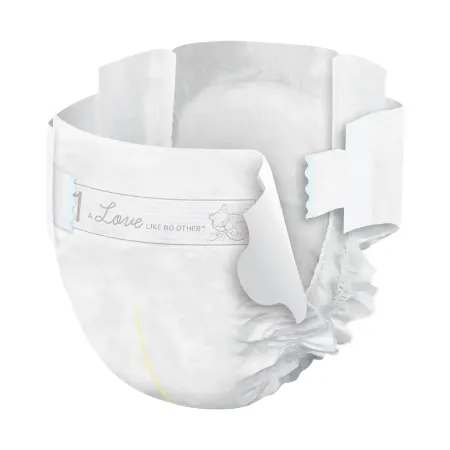
Coterie Diapers
Coterie diapers are marketed as luxury, and they do check every box for us, except for the fact that they contain petroleum (that’s why they are here as Good Stuff rather than Best Stuff). Their diapers are free of phthalates, latex, parabens, lotion, fragrance, chlorine (they’re TCF), and dyes (you can choose printed with ink or not). The third-party testing is very thorough and they are really transparent about the ingredient list and testing.
Price per diaper: $0.46
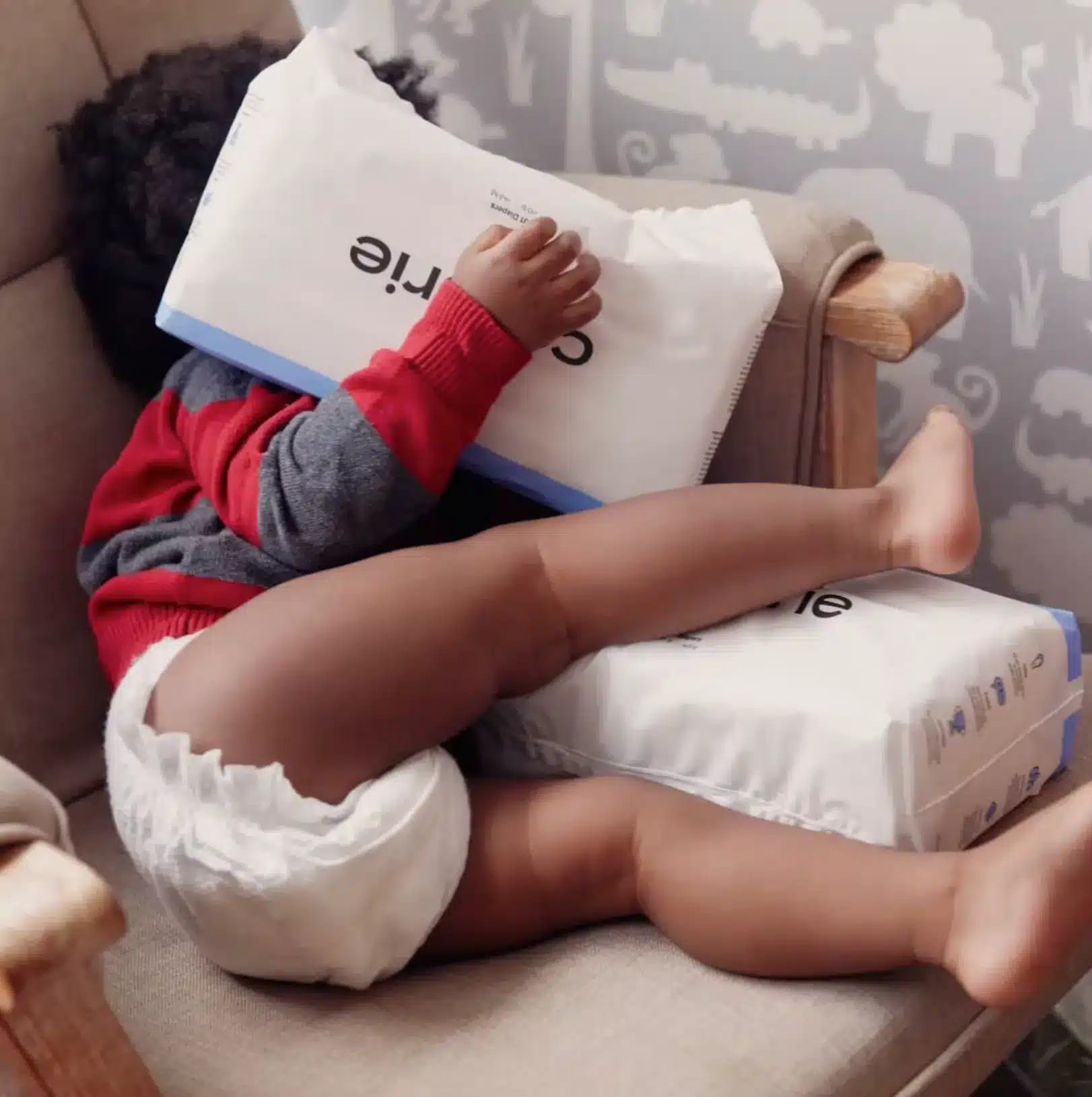
Eco by Naty Diapers
Bio-based plastic top-sheet and back-sheet. The core is made of fluff, SAP, and cornstarch. They claim it’s 50% biodegradable, and printed with non-toxic pigments. Several reviews mention a rough feel to these diapers, and I’ve never personally tried them.
Price per diaper: $0.40
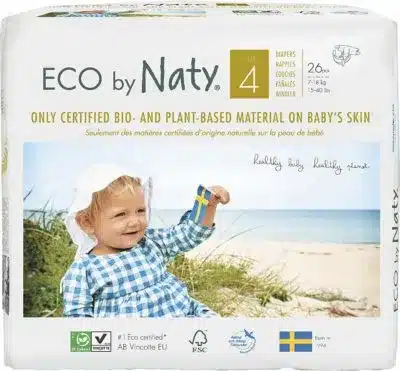
Eco Pea Bamboo Diapers
These feature a bamboo top- and back-sheet, cellulose fluff, and a SAP core. Please note that Eco Pea diapers contain aloe vera. These diapers have a wetness indicator and size labels, making life easier for those of you lucky enough to have more than one child in diapers! Eco Pea bamboo diapers get very good customer reviews. Unfortunately, we weren’t able to get an answer about dye or prints, but it seems unlikely that these diapers contain any dyes.
Price per diaper: $0.43 to $0.69
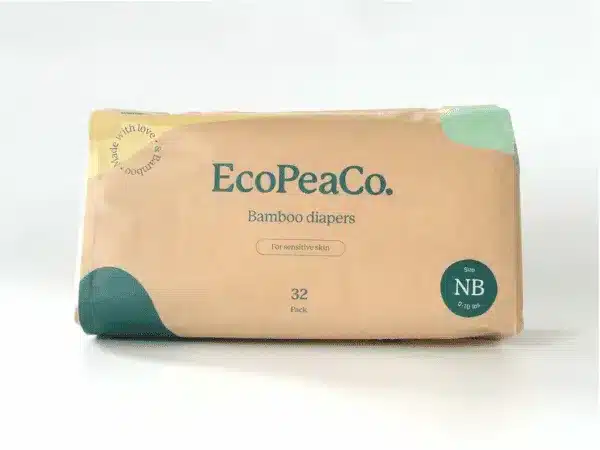
Hello Bello Diapers
This brand took some heat at launch-time for having a ton of 5-star reviews before they even went on sale, meaning that the reviews came from people who received free diapers without mentioning that they’d received free diapers. Reviews aside, Hello Bello diapers don’t qualify as Best Stuff because of a petroleum-based top-sheet and back-sheet. They feature a fluff with SAP and Bio-SAP core.
Price per diaper: $0.55
The Honest Company Diapers
Honest diapers are often cited as being “plant-based,” but this is no longer true. It appears that Honest has changed its ingredient list sometime since 2018 to include more petroleum-based plastics. These diapers have a polypropylene and polyethylene top-sheet, a plant-based plastic and polyethylene back-sheet, cellulose fluff, and a SAP and bio-SAP core. People love Honest Diaper’s cute prints, which they claim are printed “dye free.”
Price per diaper: $0.39
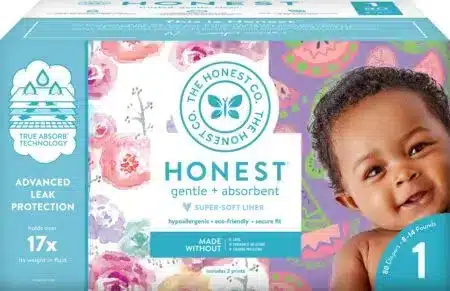
Parasol Natural Disposable Diapers
Parasol diapers are not Best Stuff because they contain petroleum products–a polypropylene top sheet and polypropyline/polyethyline back sheet. They are free of phthalates, latex, chlorine, parabens, lotion, and fragrance. They have a sustainably-sourced cellulose fluff and SAP core. Dr .Hopkins notes that Parasol is transparent about their materials, stating that it’s not possible to make a commercially viable “organic” diaper right now, but that they do everything they can to minimize the environmental impact through their material sourcing.
Price per diaper: $0.39
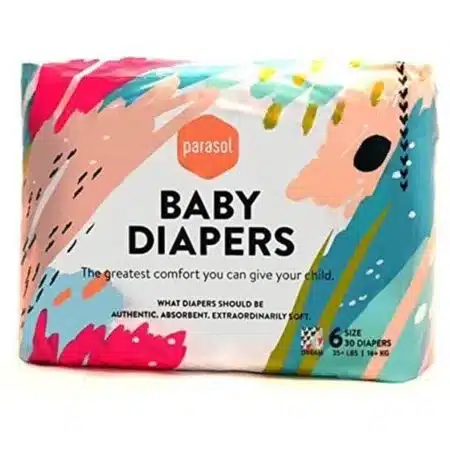
Okay Stuff
Unless otherwise specified, the following brands are free of dioxins (they are either ECF or TCF), fragrance, lotion, dyes, parabens, and latex. However, we weren’t able to confirm that any of these diapers are phthalate-free (although most of them probably are). Unless otherwise specified, these brands are constructed using petroleum-based plastics with a core made of fluff and traditional SAP.
Abby & Finn Diaper Subscription
The one nice thing about this otherwise just-okay brand is that for every box purchased, 30 diapers are donated to families in need.
Price per diaper: $0.31 to $0.57
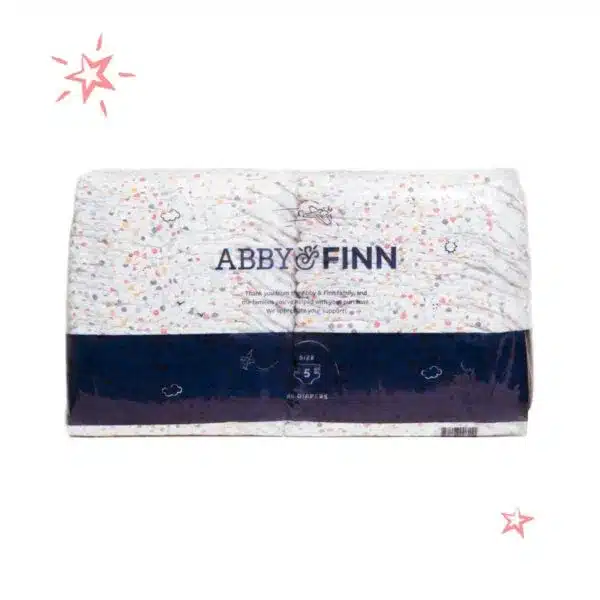
Babyganics Ultra-Absorbent Diapers
We sent an email to Babyganics with a bunch of questions about their diapers, and we received a message from customer service that they would respond promptly, but never any further follow-up. Babyganics uses “NeoNourish® — our own blend of tomato, sunflower, cranberry, black cumin, and raspberry seed oils. We incorporate NeoNourish® into the diaper core to help support your baby’s skin health.” Meh.
Price per diaper: $0.30
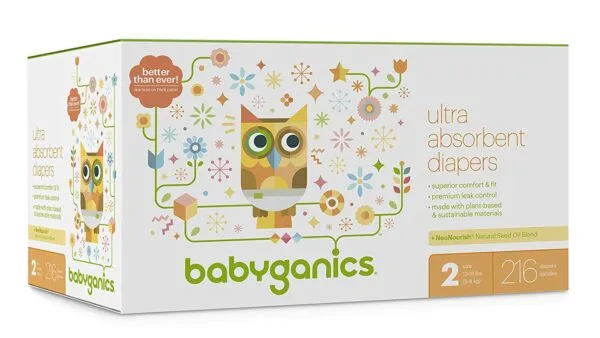
Cuties Complete Care Baby Diapers
This line of diapers is produced in a zero-waste-to-landfill facility, printed with “safe ink” (no heavy metals), and uses sustainably-sourced fluff.
Price per diaper: $0.20
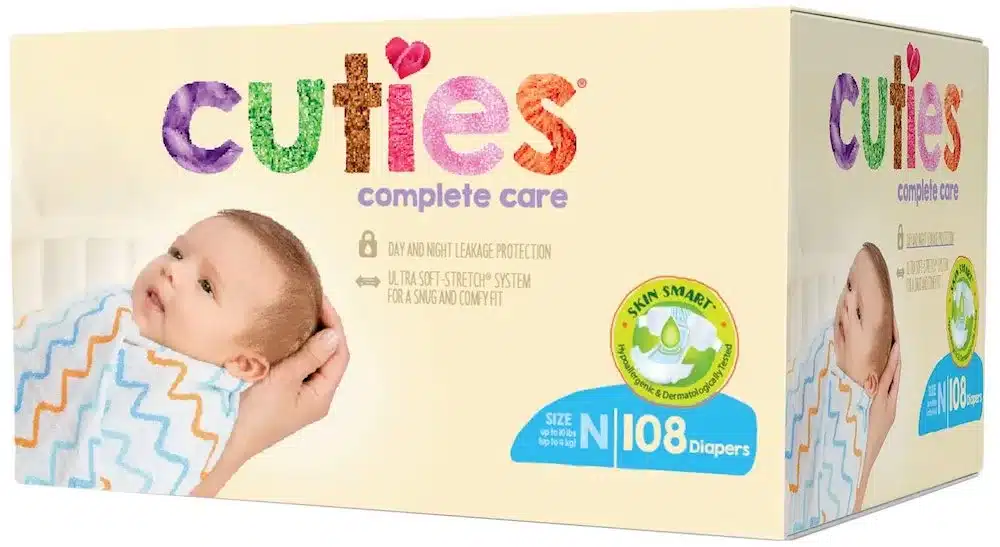
Earth + Eden Baby Diapers
These appear to be identical to the Cuties Complete diapers, and we think they are produced by the same manufacturer, First Quality, and sold under two labels.
Price per diaper: $0.29
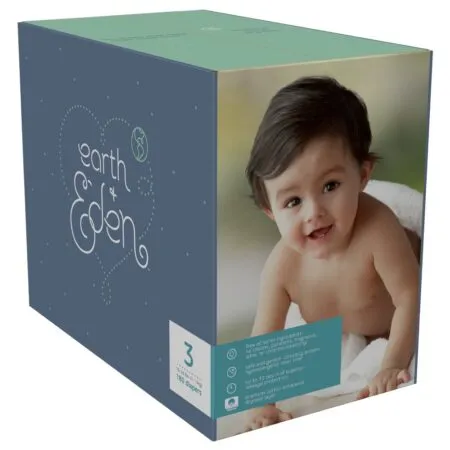
Nature’s Promise
We spoke to customer service who passed our questions along, and we did get a prompt email from the manufacturer, but without any info on phthalates or added dyes.
Price per diaper: $0.30
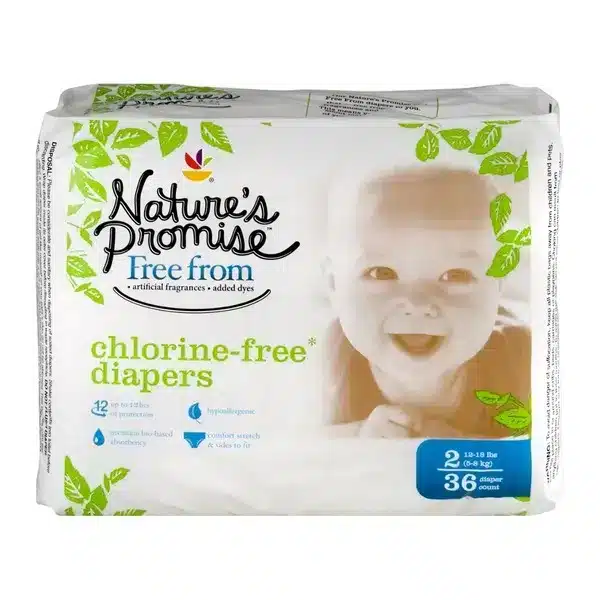
Pampers Pure Protection Diapers
This is probably the brand we are asked about most, and I wish I had better news on them. I can’t call them Good Stuff because we were unable to get confirmation that they do not include phthalates. The top- and back-sheet are made of “plant-based” material, polypropylene, cotton, and petroleum-based polymers. In addition, they are labeled as “EU 26 allergens free.”
Price per diaper: $0.35
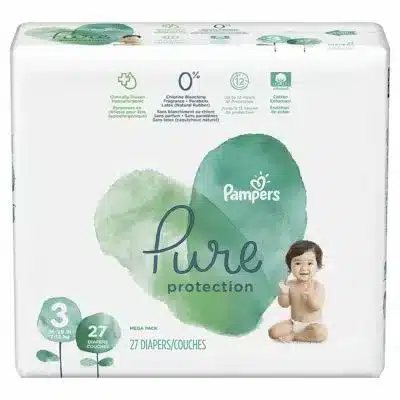
Seventh Generation Disposable Diapers
There isn’t much notable about Seventh Generation diapers, except that they use SFI-certified fluff (sustainably sourced). Their website also states: “Seventh Generation diapers are not biodegradable, nor can they be composted. Many of the materials used are synthetic, and do not biodegrade.” We give them credit for being honest!
Price per diaper: $0.60
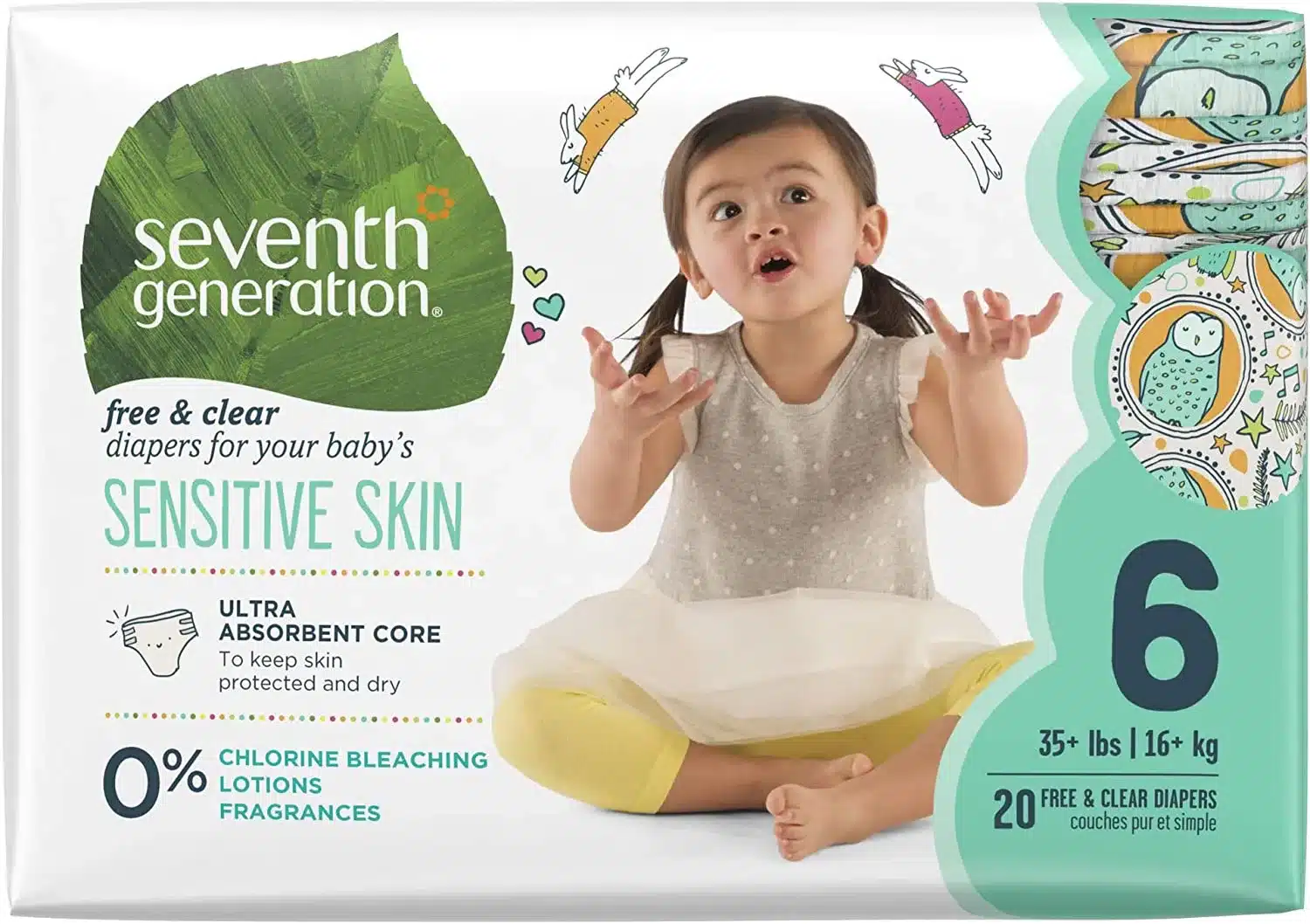
Thrive Market Diapers
We spoke to customer service who passed our questions along, and we did get a prompt email from the manufacturer, but without any info on phthalates or added dyes.
Price per diaper: $0.32
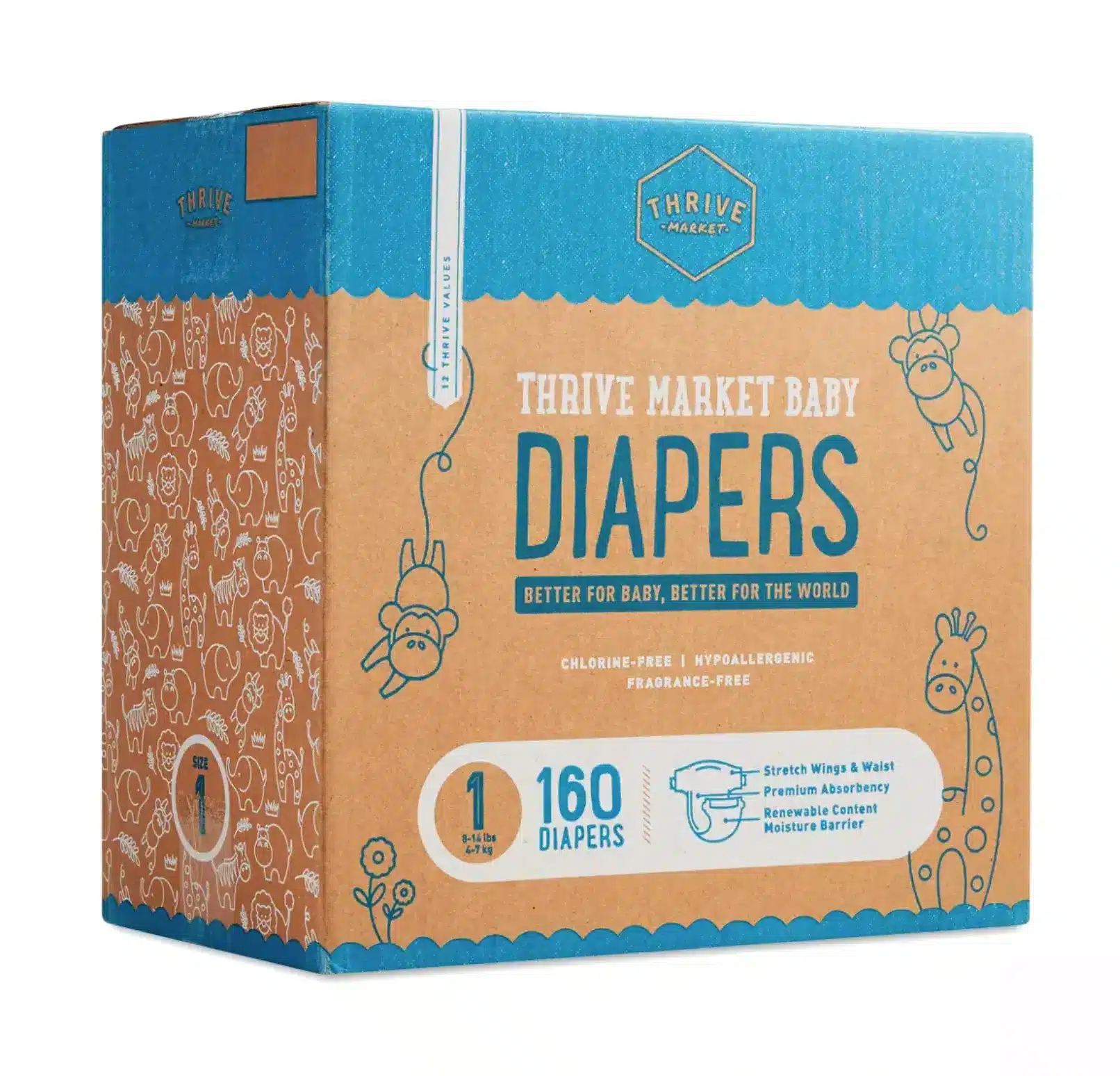
Bad Stuff
Any bleached diapers should obviously be avoided, although fortunately most diapers nowadays are unbleached. Here are the brands you’ve asked about most that made our Bad Stuff list.
LUVs Diapers
Apart from being ECF, we can’t find anything non-toxic or eco-friendly about these diapers.
Price per diaper: $0.15
Pampers Swaddlers Diapers are the same diapers as LUVs, but they are latex free, if you have an allergy.
I’m really bothered by the fact that Pampers have a smell, though. This is what they have to say about that:
“We’ve asked parents all around the world which products they prefer for their babies and they’ve told us they prefer diapers with a soft, baby-fresh scent. The fragrance in Pampers is used at a very low level in each diaper and has been carefully selected and evaluated to be non-allergenic and non-irritating to the skin.”
Eww!
Price per diaper: $0.43 to $0.94
Sneaky Stuff
365 Diapers (Whole Foods) are ECF, and free of fragrance, latex, and TBT. We are also calling them Sneaky Stuff because of their lack of disclosure about phthalates, dyes, and lotion.
Price per diaper: $0.24
Earth’s Best Tendercare Diapers At first glance these diapers appear to be at least Good Stuff: they use a “plant based plastic” for their top-sheet and back-sheet and a cellulose fluff/SAP/bio-SAP core. However, there is no info on whether Earth’s Best diapers are phthalate-free or lotion-free. They do claim to be dye-free, but don’t give any info on what is used for the print. There is a general absence of transparency about the composition and percentage of the diaper that uses “plant-based plastic.”
Price per diaper: $0.32
Huggies Diapers are ECF, and free of fragrance, lotion, latex and parabens. The label states that they are “EU 26 allergens free,” as well. I’m not moving them from Sneaky Stuff because they do not disclose any information about phthalates, dyes, or the composition of the back-sheet.
Price per diaper: $0.59 to $0.88
Kirkland Signature Diapers As many of you know, Kirkland has made some great improvements to their diaper, and now appear to be free of latex, chlorine, fragrance, lotion, and artificial dyes. That said, there is no evidence that they are free of phthalates (we chatted with a rep and they said that they were unable to provide an answer about phthalates) and of course they are still made of petroleum-based plastics. They state that “some of the polyethylene is made from sugar cane” I would like say they’ve upgraded from Bad Stuff to Okay Stuff, but with a lable that boldly claims that these diapers are “made with plant-based materials,” coupled with the lack of transparency on phthalates, we have to call these green-washed, and therefore Sneaky Stuff.
Price per diaper: $0.26
Mamma Bear (Amazon brand) are ECF, fragrance free, latex free and hypoallergenic, but have no further information available. Mama Bear gets a “Sneaky Stuff” designation for lack of disclosure about phthalates, dyes, and lotion.
Price per diaper: $0.16
Rascal & Friends Premium Diapers A few of you asked about this brand, but the response we received was: “Unfortunately, we are unable to provide a detailed ingredients list of our diapers, as this is commercially sensitive. We are proud to say that our products are free from formaldehyde, elemental chlorine, phthalates, parabens, gluten, and endocrine disruptors. We also have a focus on no nasties, and our diapers contain no latex or fragrances and we only use water-based inks! The inks we use are non-toxic and completely harmless to baby’s skin.” Without more details on what is in these diapers, we will consider them Sneaky Stuff.
Price per diaper: $0.22
Up & Up Diapers (Target) are Sneaky Stuff because the label states “petroleum-free lotion” and “perfume-free” as opposed to simply being lotion-free and fragrance-free, although we did confirm that they do not contain phthalates.
Price per diaper: $0.43
What About No Diapers at All?
Forgoing diapers all together, or practicing “elimination communication,” is clearly the greenest option of all.
Here is a story that one reader, Gillian, shared with me:
I learned about EC from a very hippie friend and initially I laughed at her. Then when my son was about 3 weeks old, he started giving very obvious cues about when he was going to poo. I would wait for him to finish in his (disposable) diaper, then clean him up. I realized that I could have just as easily put him on the potty. I tried that a few times, but before he could hold his head up it just wasn’t working for us. As soon as he could hold his head up, though, I started putting him on the potty during most diaper changes. I figured, hey – the diaper is off anyway! I was catching some pees and some poos, but there wasn’t much rhyme or reason to it. When he started eating solids he got into a good pattern of pooping every evening, so I just put him on the potty. On average, I now only have to clean one dirty diaper per week, and my longest stretch without a poopy diaper has been 21 days. I am able to catch some pees, but I’m still not great at it. My son is now 8 months old. I love not cleaning dirty diapers!


Maia, Founder & CEO
Note: This article contains affiliate links or sponsored content, which means that if you make a purchase, we may earn a commission. We only recommend products that meet our strict standards for non-toxicity and that we use (or want to use!) ourselves. Thank you so much for supporting the brands that make Good Stuff!
Enjoying this guide?
Join 60K families who rely on our free guides on everything from milk to mattresses! Sign up to get $5 off your first order, access to our ultimate Clean Products Cheat Sheet, and ongoing exclusive access to coupon codes and promotions. Our weekly newsletter is filled with well researched tips and tricks to live a toxin-free lifestyle.
Related Posts
The Best Non Toxic Baby Bottles
Disposable Diapers and Diaper Rash: Prevention and Natural Remedies
Best Probiotic Brands Shopping Guide
Healthybaby Is Our New Favorite Baby Care Brand
265 responses to “The Best Non-Toxic Diapers Guide (Updated 2023)”
-
Great info! I’m thinking of trying “EveryLife” diaper. Any insight into this brand? Also, I’m a big believer in Elimination Communication (obviously not full-time) and have been practicing it with my 4-month old baby since birth. Using disposables as opposed to cloth is just easier to rip off when I get the cue 🙂 I would love to see more push for EC!
Thank you!-
I love the idea of Elimination Communication. EveryLife Diapers look good at first glance. Have your read our Diaper Guide? https://gimmethegoodstuff.org/safe-product-guides/disposable-diapers/
-
-
Hi, Maia. Any thoughts on Millie Moon from Target?
-
Hi Jennifer,
I haven’t done a deep dive but I looked at Millie Moon and I see that they are high quality but I don’t see information about their safety. We recommend https://gimmethegoodstuff.org/store/bambo-nature-dream-diapers-disposable/
-
-
Hi, do you have an opinion about Merries diapers. It’s a Japanese brand and I know a lot of people love them because they are the softest diapers I’ve ever seen but I wonder how they are rated.
-
We tried so many cleaner diapers with our first daughter, and we settled on Happy Little Campers. They were by far our favorites! They absorbed well, and a bonus was you can get them in your Subscribe & Save order on Amazon!
-
I tried happy little campers and my daughter got bad diaper rash. I gave them a chance that it wasn’t just a fluke thing, I used the whole box of diapers and kept putting diaper cream on her. It would clear up and then come back. She doesn’t usually get diaper rash very often with other brands
-
Have you looked into freestyle world diapers they are new. What are your thoughts on the diapers and how do you feel they qualify?
-
I have used Happy Little Camper diapers and they are great! For comparison, I used to use Huggies special delivery and HLC holds up just as well. I tried Hello Bello for a brief time and it couldn’t handle the nighttime urine at all.
-
Thank you so much for these amazing guides! I’ve been using Dyper for the last 10 months and was excited about both the clean product and the Re-dyper composting program (and honestly the absorption performance is amazing on these). We don’t have a municipal composting site close to our house, so I loved the idea of a composting program that the company coordinates for you. Dyper is still new and has changed things without notice (pull up sizing, packaging), but I was VERY disappointed when they changed the Re-dyper program cost without any customer notice for a subscription. I was paying $10/month and suddenly they charged me $60/month without letting me know or one last month for grandfathered customers. I’ve worked in CPG for a while and a change like that without notice is unheard of. I am now planning to try one of the other brands on this list, but just a warning for anyone trying Dyper is don’t be surprised and keep an eye on your subscription costs!
-
I also had some significant pricing and communication issues with them. We resolved issues after a lot of back and forth but I was very frustrated with sudden pricing changes along with emails that state a new shipment is going out without telling me how much it will cost — have to log in each month to search for those details. Communication is weak though we really liked the diapers.
-
-
I am having baby #2 with a 7 year gap between pregnancies, and man, things have changed! I used all cloth diapers with my first, but this time, I don’t have a washing machine, so I’m very happy for this guide! We use a composting toilet, and I’ve been hoping there is now a diaper available we can just throw in to compost, which it looks like some of these on your list are, am I right?
Also, a brand that popped up in my initial search is a New Zealand brand called ECORIGINALS (ecoriginals.com). They look pretty good and explicitly state they’re phthalate-free among other things. But they’re only 90% biodegradable, so seems like that means we couldn’t compost them.
Thank you for this. I really appreciate all the work you do!
-
I’m looking for a good overnight pullup-style diaper for children age 6 who wet at night. Any suggestions? I saw the Abri-Form, but they are diapers. I need something he can pull off if he makes it to the bathroom. THANK YOU
-
I’ve heard great things about the training pants from Healthy Nest!
https://healthynest.pxf.io/3PONvA -
We’ve used the training pants from Healthy Nest for our almost 5 year old and think they’re great! They are a little tight so he asks for help to take them off most times but for a 6 year old I’m sure they would work well.
-
-
Hi, thank you for making such a comprehensive guide!
My only qualm is that you say human feces shouldn’t be composted. While it’s true many people don’t have a way to compost diapers, it’s not true that human poop shouldn’t be composted.
Lots of off grid communities use composting toilets and generate “humanure”, which is extremely beneficial and useful, particularly for fertilizing trees. It’s true that is shouldn’t be used on annual garden veggies or things of that nature, but human poop (especially of someone who eats well) is valuable and composting it when possible is better than flushing it to a waste water facility or into a septic tank.-
We should modify this by saying that when properly composted and handled, human feces can be a valuable source of nutrients for a crop. Unfortunately facilities that are equipped to do it properly are somewhat uncommon.
-
-
I love cloth diaper. what is your thought about cloth diaper?
-
Hello,
Have you ever tried or reviewed the diapers Rascal and friends by any chance?
Thank you!-
Yes! Please let me know about rascal and friends! It’s the only
Diaper we’ve used so I want to know if I need to change!
-
-
Curious to know what you think about viscose bamboo and just regular bamboo? I know Dyper uses viscose bamboo and I’ve read a lot about the process of obtaining viscose and contains a lot of toxic chemicals. Does that come up in your research? If so, does the chemical process not affect the final product so still OK to use?
-
I’d like to know about this too!
-
-
I just came across these EWG verified diapers. Any thoughts or info on these? The seem to be good. EWG verified makes me think these are good stuff. I have a trial and they are sooooo soft and absorbent and thin. Wondering if you knew anything about them? Thank you kindly!!!
-
This is the website
Healthy Nest diapers -
Yes, these are Good Stuff!
https://healthynest.pxf.io/3PONvA
-
-
Thanks for sharing such a useful information. I appreciate your blog post.. Have you tried 100% organic cotton and bamboo muslin bed and bath products ? I would like your thoughts if you have, or if you want to check it out …https://www.rollupbaby.com/collections
-
Have you heard anything about offspring diapers? They have good reviews and the company is based in Australia.
-
Possibility to include Little Feet by Lachance?
https://www.amazon.ca/BIODEGRADABLE-BAMBOO-DIAPERS-LITTLE-LaChance/dp/B073XQ8BM3
We were looking for something compostable and we totally love them. They are expensive though, so we will test something cheaper from your Best Stuff list.
-
has kirkland not changed their formula? I thought they were chlorine free now.
-
I was using nest for a year and then I had to deal with their customer service.(I MEAN, THE NEST COMPANY DIRECTLY…not gimme the good stuff) First it was ok, I had mistakenly ordered diapers which are $20 more expensive than pull ups so I should have known. I was within their return window and they said to just get rid of the diapers and they will send a replacement. So donated it but I also ordered a case of pull ups cause I was low and needed it fast. The replacement never came so I ordered another. That never came either. I had to order another one since I got no replies from customer service. I basically paid $150 for one case of pull ups, so never again. I should have gotten them from this website. Also, I noticed a petroleum smell on the pull ups in the last few shipments so I’m not entirely sold on them anymore.
-
DYPER said that they had updated their diapers and pull up briefs, and made some adjustments, so their V3 diapers and briefs are more absorbent and better for the planet. Link to some information is here: https://dyper.com/v3
The updates have been applied for the last few months in 2020 (likely late 2020).
With the updates/ adjustments, will DYPER still be ranked among your Best Stuff please?
-
Can you please kindly review Natural Blossom’s disposable Pull Up Pants/diapers: https://www.amazon.ca/Natural-Blossom-Disposable-Hypoallergenic-Diapers/dp/B07KM9CYJ2
Which category will they fall in please: best, good, okay, bad, or sneaky?
-
Can you review Natural Blossom’s disposable pull up pants/diapers please: https://www.amazon.ca/Natural-Blossom-Disposable-Hypoallergenic-Diapers/dp/B07KM9CYJ2
-
Nature’s One now makes Baby’s Only Diapers and Wipes. They seem very affordable and their description sounds good, but I can’t seem to find a third party review. I’d love to see your take!
-
Hello bello have my LO instant rush, and based on reviews I would say I’m far from alone, def some strange ingredients there since Honest and Eco by Naty NEVER gave such quick and aggressive reaction. It’s strange that all of them are in the same category in the review above. There is smth very sneaky in Hello bello one…
-
The Abby & Finn website specifically says their diapers are phthalate free. Is there another reason they are only considered “okay stuff?”
https://abbyandfinn.zendesk.com/hc/en-us/articles/360036126774-Are-your-diapers-phthalate-free- -
Hi! I see this was written about a year ago and so am wondering if the stance on Kirkland diapers is still accurate. I was just on the app and they appear to have a diaper that is more eco friendly. It doesn’t say anything about not having bleach, just that it is hypoallergenic, so I don’t know if the bleach is still a factor, but it does say it now has plant based materials, but only 23% by weight (which I couldn’t figure out what that meant in comparison with other brands like honest which is what we use now).
-
I just messaged Huggies and they said all their diapers are free of phthalates but they do use dye. Here’s the link for their ingredients: https://www.kimberly-clark.com/en/brands/ingredients/consumer/huggies/diapers
-
Mama bear has a new gentle touch diaper that is free of dyes, Paraben, fragrance and lotion. I’d love to see what you think of these!
-
Just wondering where coterie diapers would fall in compared to the brands already reviewed.
-
I was wondering about Coterie diapers too!
-
-
We usually use cloth diapers, but we also use Honest diapers. We might be switching away from them soon though due to a weird smell, and I think they are now giving my one year old diaper rash. Here’s an email I received from their customer service regarding the weird smell:
“Yes, our diapers have some functionality improvements that were made as well as the core changed from a blend of super absorbent polymer, TCF fluff pulp, and cereal-based polysaccharides to a blend of super absorbent polymer containing renewable resources and TCF fluff pulps.
As for any scents you might notice, everything has a scent including the ingredients that compose the product and under certain conditions, such as humidity or heat, can enhance or diminish a product’s scent. If you find the scent unappealing, we recommend to try opening the package and leaving the Diapers in a cool, dry space to air out for a bit.”
-
We usually cloth diaper but use Mum&You Nappychat diapers when we have to use disposables, and Simple Truth (Kroger) wipes. Would love to see some thoughts on those!
-
What about the Rascal and Friends diapers and training pants? They are relatively new and claim to be a non toxic diaper company. How would you rate them?
-
What about Kit & Kin diapers?
-
I got this email from Babyganics
“ Thank you for taking time out of your day to reach out and inquire about Babyganics® Diapers. We know your time is valuable, and we appreciate you contacting us.
Good news! I’m happy to say that our Babyganics® Diapers are both free of phthalates and parabens. You can always find out what is in our products by visiting our website and searching for specific products.”
-
After reading this post, I was concerned because I have been using Earth’s Best diapers for fifteen months– since my child was born! So I called the company to ask if the diapers contain phthalates, and the customer service representative on the phone said that none of the Earth’s Best diapers contain phthalates– even though it is not printed on the box. I just wanted to add that to this excellent post and would be curious to hear how you rate their diapers if you accept what the company says on the phone! But I will be switching to the bamboo diapers in any case because of the environmental impact, hopefully we won’t be using diapers that much longer! Thanks for your excellent blog and for doing all this research on our behalf!!
-
Just wondering if any of the good/best/ok stuff is especially effective for use as a night diaper. I’ve been using cloth during the day and Dyer brand at night, but by 5:00 am my baby has usually soaked through which means an earlier wake up than it would have been if he were still dry.
-
I am having a very hard time finding safe disposable training pants for my toddler that have Velcro sides. Do they exist?! I currently use Bambo and love them. But, we may need to switch to something with the Velcro sides soon. Any suggestions?
-
Hi-
Thank you for this information. I noticed Bamboo Nature has a classic line and a love line. Is your review just for the classic line?
Thanks!
-
I was curious about the Sam’s Club diapers because that’s what my sister in law buys.
Depending on the size, they cost 14-27¢ each. Sounds like they would be rated “okay” maybe.
From the website: Hypoallergenic, and free of chlorine bleaching, lotions & latex, the Member’s Mark diapers are easy on your baby’s most sensitive skin. And with our Ultra Soft Max Liner, this is our softest diaper yet! -
I’d love to know how Brandless diapers rate good/bad/sneaky
-
I did an absorbency test with Andy Pandy, Coterie, Honest, Pampers Pure, and Huggies Little Snugglers.
I poured the exact same amount of liquid in each diaper and left them out in the air.
I wanted an eco-friendly/chemical free diaper but was concerned that the inside of the diaper always felt wet with certain brands (yes…I touched the pee).
I was pleasantly surprised that Honest and Coterie both absorbed almost as well as Pampers Pure and Huggles LS (both took about 10 minutes vs. 5 minutes for the others, but no biggie), however…the Andy Pandy diaper literally remained soaking wet for over an hour. Believe me…I wanted to find that bamboo worked well, but this brand at least truly did not wick away moisture in my touch. I eventually threw the diapers away, so for all I know…it never dried.
I was very disappointed. I like the idea of bamboo, but I’m not willing to let my 6 month old sit in wet pee (I understand this might be an asset for older babies!). I decided to stick with Honest after this test because Coterie is very expensive, and at least Honest is TCF. I have no interest in supporting P&G with Pampers Pure.
I also use the Honest overnight diapers.
That being said, I would be interested in thoughts about Coterie or the most non-bamboo eco-friendly option. Also, how does Hello Bello stack up against Honest environmentally? I think I could use some Hello Bello (much cheaper) during the day, however, at night there is absolutely no way these will hold up for me (12 hours before changing…I’ve been super pleased with Honest overnights).
-
From a purely non-toxic standpoint, I’m not sure I understand why Naty diapers are not on the “best stuff” list?
-
Sorry but I’m still waiting for an answer about Naty…I believe that they are made with a 100% bio-based plastic top and bottom sheet made from Non-GMO corn starch, not petroleum based at all… am I mistaken? If there is anything petroleum based in these I don’t want to buy them anymore but I’m almost out of diapers so I need to make a decision quick! Please help!
Thank you!!
-
-
What about parasol? Good? Ok?
-
This is very informative but as a mom who always balances this with real life practicality… can you also give a rating of how they work??? Leaks, blowouts, mess?
Personally I will pay a little more and want to choose what’s better for our environmental but I will not keep using it if it means my daughter’s clothes are wet or she wakes up at night or I’m stuck with poop everywhere! lol!
Thoughts?
-
Agreed… per my comment below, I was bummed when I did a test and the bamboo diaper I had (Andy Pandy) didn’t absorb at all. I’d be curious about their thoughts on Coterie because that diaper worked well in my test.
-
-
Any thoughts on Rascal + Friends?
-
Ok I will admit that my daughter is wearing Huggies. Something that I didn’t want to do when I started my disposal diaper shopping research. However she had an allergic reaction to Pampers Pure and I, as her mother and primary diaper changer, am allergic to aloe which gives us very limited disposable diaper options. Can you tell me if any of the “good” diapers are aloe free? because even just picking a couple above at random they contained aloe. Also yes I’m completely certain my allergy is to aloe and I’ve been dealing with the increasingly limited number of items I can use because of it for over 2 decades now.
-
Thanks for the updated guide! We’re graduating to pull-ups (training pants) and it seems that none of the “best stuff” offers a pull-up option. What would be your top recommendation?
-
Thanks for another great list! I cloth diapered my first almost exclusively… my husband had to convince me not to take my cloth diapers on a long vacation one year, I honestly don’t think we bought disposables more than once or twice. My second we probably did 75% cloth, 25% disposables. My third was cloth diapered hardly at all… I tried in the beginning and besides being super busy and dealing with some pretty intense depression and anxiety, I swear she was allergic to her own pee. The only diapers we tried and could use without her getting super red were Pampers Pure because they have that layer of netting that holds the saturated portion away from the body. I’m glad to see they weren’t the WORST option! I still feel bad that my first got the best off all my efforts and it slowly dwindled down, but such is life!
-
For overnight diapers, I need to use extra padding like a Sposie pad. I’m guessing those are “bad.” Do you know of any liners that qualify as “good stuff”? Otherwise, the use of them negates the use of a safe diaper!
-
Honest diapers are terrible! They don’t contain any pee or poop, even when I go up a size. I’m curious about the research beyond the materials in the diapers. You have them in “Good stuff” but, they are not good diapers (I know I am not alone in this). Did you consider quality of holding in pee/poop?
-
What about honest diapers, parasol diapers and hello bello ????
Thanks
-
Yes – Parasol would be great to know about. And Coterie? THANK YOU!
-
Also curious about coterie! I love how soft they are!!
-
Coterie and Parasol would both qualify as Good or Okay stuff:).
-
-
-
What about the new Earth and Eden diapers by Amazon?
-
Thoughts on the new huggies special delivery diapers??
-
What about Naty diapers. We love those
-
Hello, what are your thoughts on Dyper brand disposable diapers? They appear to be very eco-conscious and free of the bad chemicals. Thank you!
-
I was wondering the same thing about this brand?
-
-
Really curious on your thoughts on Cutie Pea diapers and wipes. They advertise lots of “bad stuff” they don’t include and diapers that are half biodegradable and wipes that are 100% biodegradable. Would love to know. Currently using Bambo and loving them thanks to your AMAZING site! Keep on the good work!
-
Bambo Nature seems to be the all around favorite, but on the list of ingredients, I see a lot of plastic products. I try to avoid plastic as much as possible, even the ‘safer’ types. What are your thoughts about this?
Non-woven backsheet (outer side) of polypropylene (PP) and polyethylene (PE). Absorbent of polyacrylate (SAP) and cellulose (ECF fluff). Topsheet of non-woven (PP). Acquisition layer of non-woven (PET/Co-PET). Hook tab fastening system of non-woven (PP/PE). Adhesive made of synthetic rubber—no optical brightener added. Wetness indicator. Elastication made from elastane.
-
Like so many requests Love to hear updates on how Pampers Pure and Honest Company compare to your favorite Bamboo both for eco friendly and safety for baby? Of course blow-out proof. Have seen many reviews saying that the newer version of the Bamboo is not as good.
-
What are your thoughts on babyganics diapers?
-
I’ve been wondering the same about this brand?
-
-
I keep seeing Abby & Finn diaper and wipe ads. Any idea as to whether these are any good? Or the Amazon brand Mama Bear diapers? Or the Cloud Island diapers at Target? Lol, so many new options but I’m so skeptical of EVERYTHING that comes out these days! Thanks!
-
I pay $7.99 for Nature’s Promise diapers. The price per diaper depends on the size. That is always the price – they just incrementally reduce the amount of diapers as the sizes increase.
-
I would love to know what she read about EC! I only have one book on my list, and it’s $50. Not so sure that’s necessary (although if it is, I’ll do it!).
-
-
Have any thoughts on Pampers Pure?
-
I have recently come across “Brandless” diapers. Have you researched them at all? Are they safe?
-
I’d also appreciate your opinion on Brandless diapers.
-
Do you have any insight into Dyper?
-
Hi! Bumping request for Poof diaper review again – would love to see how these compare. And….
Brandless – if they are “good stuff”, the price is going to be impossible to beat!
Would LOVE your input on whether they’re good!
-
Are Aden and Anais diapers good or safe? They claim to be free of all bad chemicals. Thank you
-
Yes also wondering about Rascal and Friends. Just picked them up at Walmart today.
-
Wondering about Rascal and Friends diapers and honest company…thoughts?
-
Hi! I saw an ad for Abby and Finn diapers on my Facebook feed. Do you have any thoughts on this brand?
-
Most natural disposable diapers also contain Dioxin. This is a chemical by-product of the paper-bleaching process used in the manufacturing of most diapers. Dioxin is carcinogenic. In fact, the EPA lists it as the most toxic of all cancer-linked chemicals.
-
You do realize that Bambo uses SAP’s as well right? I saw you commented on other brands of natural/organic sposies semi critical because they used SAP’s. Wondering why you didn’t mention that with Bambo.
-
What about Abby & Finn diapers?
-
Any updates on the new Pampers Pure diapers? Thanks!
-
Bambo diapers are made of polyethylene and polypropylene as well. Don’t be misleading to make a sale.
-
-
Any thoughts on the new Pampers Pure line?
-
-
Have you seen or looked into the new Pampers Pure line? The claims they make about eco-responsibility and skin safety seem to align with brands like Bambo, etc. They *also* are cheaper, which would be fantastic! I don’t want to fall into greenwashing though and am skeptical. I WOULD be happy to support a major brand taking a more responsible approach to manufacturing and providing products that are safe for my forthcoming little one!
-
I too am curious about the new Pampers Pure! An updated guide would be greatly appreciated!
-
Hi! Any thoughts on Amazon’s brand of diapers/wipes?
-
Hi there, I love your site!
Any thoughts on the new pampers pure? -
Hi! I was wondering if you were able to review the babyganics diapers yet? I cannot find the ingredients list for them anywhere. They say natural seed oil blend but im not sure what else is it it…maybe you found more info on them? I love your site btw!!
-
We have mostly used cloth diapers, but needed something more absorbent at night. Therefore, we use Bambo Nature Diapers almost exclusively. I chose them due to the great eco-friendly reviews they have received. However, I was looking at the label and noticed that they have polypropylene on the outer and inner sides. Isn’t this worrisome?
Thanks in advance!-
Nope! Fortunately, polypropylene is a super safe, non-leaching type of plastic.
-
THANK YOU SO MUCH!
-
In the copy of your glossary that I have it says that polypropylene ‘contains additives that have been shown to leach, raising safety concerns.’ Does that make polypropylene less safe? Thanks!
-
-
-
I’d be interested to hear your thoughts on Amazon’s newest “Mama Bear” brand diapers. They are marketed as “hypoallergenic, fragrance free, and free of environmental chlorine.” They appear to be trying to compete with brands like babyganics, honest company, and seventh generation. I’ve tested them for a week now and love them. We’ve previously used honest company, but these are soo much softer, more flexible, thinner, and cheaper…hoping they really do compare in terms of safety.
-
I would LOVE, LOVE, LOVE a look into parasol diapers please! I know there have been a few requests and I’m sure for many other brands too, and you’re swamped but it would be greatly appreciated!
Thank you so much!
-
This article seems a little out of date as it shows the old version of Bambo which appears to be universally applauded as the best option. However, the new version now seems universally hated in that they leak and have much less absorption and cost more to add insult to injury.
Can you update your article to let us know what you recommend now? As while the old ones are still available on sites like Amazon, I imagine not a good idea to go with a brand that may run out at any moment.
-
Bambo diapers were the best we never had any problem with them at all. Recently they redesigned them and the past 3 months have been terrible they have leaked almost every night and blowout are more frequent. The old design was great. Now I’m looking for new diapers so disappointed.
-
I am anxiously awaiting your updated diaper guide. Any thoughts on the Thrive brand? Mixed reviews on the Bambo have be looking for a cost comparable alternative.
-
What is your opinion about Parasol Diapers? I sent a simple email requesting ingredients and this is the reply I received (not great).
– The wood pulp (from US) makes up the highly absorbent core of our Parasol diapers. It is chlorine-free, fragrance-free, and sourced only from certified sustainably managed forests,
– Polypropylene nonwoven (from Czech Republic) makes up the breathable, gauze-like material you see on the outside of your baby’s diaper.
– The hook & loop closing tabs (from Turkey) keep your baby’s diaper secure while being comfortable.
– The polyethylene film (also from Turkey) makes up the printed, breathable back sheet of our diapers.
– The latex-free, hygiene-grade elastic (from South Korea) is used only in our leg cuffs; the gentle elastic allows for a comfortable fit for your little one.
– Lastly, the super-absorbent polymer (from Japan) is mixed with our wood pulp to create an incredibly absorbent core that keeps your baby dry and prevents leaks and blowouts. -
We use Bamobo diapers and love them but they just can’t handle the night without leaking. Can you please recommend a good nighttime/overnight diaper? Thanks!
-
where can we find your updated guide on safe diapers?
thank you -
As everyone knows Bambo nature has reinvented their diaper with a new design and a few different changes. What I was wondering is does the new bambo design use less SAP than their old green pack? I looked on their website and they mentioned how they made the new diapers thinner, and more flexible and all that jazz but never mentioned if they changed the amount of SAP they use. I was just wondering cause I noticed the exorbancy in the new diaper is different from the old diaper and feels different when wet and was wondering if that had anything to do with it.
-
I found this on the Pampers Website
What We Don’t Add to Pampers Products
To help answer questions we receive from parents about what’s not in Pampers diapers and wipes, we’ve compiled a list of what we don’t add*.
If you have any questions about Pampers products, please visit our FAQ page or call 1-800-726-7377.
– Bisphenol A (BPA)
– Dioxins
– Disperse Dyes
– Elemental Chlorine
Pampers does not add chlorine to diapers and uses an elemental chlorine-free process to purify the fibers in diapers. The FDA considers this method to be safe and dioxin free.
– Ethanol/Alcohol
Pampers wipes and diapers are ethanol free, so they are labeled as alcohol free, which is commonly understood to mean free of ethanol and isopropyl (or rubbing alcohol). These types of alcohol can dry out baby’s sensitive skin.
– Natural Rubber Latex
– Lead and Mercury – in printed inks
– Organotins
– Parabens (see preservatives below)
– Pesticide Residues
– Phenol
– Polyvinyl Chloride (PVC)
– Specific Preservatives
Pampers does not use preservatives in our diapers. We carefully select preservatives for our baby wipes to keep them pure and fresh. We do not use MIT or CMIT; formaldehyde or formaldehyde releasers; parabens; quaternary ammonium compounds (QACs); and triclocarban or triclosan.
-
Thrive Market just released their own diapers and wipes. I’d love to hear your thoughts of the ingredients, since you’re so much more versed in this than I am. They must the ingredients in their site, which I appreciated. They are:
Totally Chlorine-Free Wood Pulp (From Sustainably Managed Forests, No Optical Brighteners), Absorbent Bio-Core (Wheat/Corn Polymer Blended With Sodium Polyacrylate), Plant-Based PLA (Inner & Outer Layer), Safe Adhesives (In-Seams & Joints), Polymer Spandex & Polypropylene (In-Leg/Waist System), Ink (Made Without Heavy Metals in Printed Backsheet), Citrus Extract & Liquid Chlorophyll (Natural Acting Odor Blockers in Bio-Core
-
I have a question because i’m researching and cannot seem to find the information I am looking for. What is your opinion on “Cutie Diapers”? I see mixed reviews and I cannot find a webpage that lists the ingredients and I’m hearing that they have dyes and then other sites are saying they are all natural, but than another site is saying they have bleach in them. So I want to know your take on them because I do not want to use them on my son if they will give him a rash or cause harm to his body. I currently go between using Bamboo and Kirkland.
-
Hi! My daughter is 8 months old and has eczema since she was 7 months. I’ve been using Honest pods for her clothes and Pampers Swaddlers. I use California baby shampoo, but not all the time and only for her hair. I thought maybe to try Green Shield laundry and Honest diapers. Also I saw Green Goo’s baby balm and Babo botanicals oatmeal calendula and was wondering if it’s ok to use for her. What would you suggest for laundry, diapers, lotion?
Thanks. -
Bambo recently changed their diapers, citing a reduction in SAP however they just do not perform as well as they used to given now they are so thin they don’t hold anything in and instead just sag after #1 and 2. So frustrating because I’ve used them for 2 years and now feel like I have to start over.
-
Omg love your site!!
What do you think of Thrive Market Brand of Diapers?? Here’s their ingredients:
totally Chlorine-Free Wood Pulp (From Sustainably Managed Forests, No Optical Brighteners), Absorbent Bio-Core (Wheat/Corn Polymer Blended With Sodium Polyacrylate), Plant-Based PLA (Inner & Outer Layer), Safe Adhesives (In-Seams & Joints), Polymer Spandex & Polypropylene (In-Leg/Waist System), Ink (Made Without Heavy Metals in Printed Backsheet), Citrus Extract & Liquid Chlorophyll (Natural Acting Odor Blockers in Bio-Core)
https://thrivemarket.com/thrive-market-diapers-x-large-27-lbs#pdp-long-description
-
actually, these look good to me!
-
-
Any thoughts on Parasol Diapers?
-
Will Babyganics, Kroger natural diapers, and Kirkland be on your next diaper update?
Thanks for your site! Very helpful! -
Do you have any research or opinion on Eco by Naty?
https://www.naty.com/us/diapersThank you!
-
Hi. I just found this brand while researching on the internet.. what’s your take on these?
https://www.poofdiapers.com/-
No updates about diapers? Been waiting for any response for a year now about Poof diapers..
-
-
HI there~ You note that “an independent report found that disposable diapers produce more than 50 times the waste of cloth diapers and use twice as much water and triple the energy.” Can you provide a reference or link to this particular study? My husband is a scientist and needs scientific convincing of these exact types of statistics. Thanks!
-
How about swim diapers!?!?!
We’re going on a trip soon and I would love to get your opinion!!! Thanks in advance!!! You’re amazing!!!-
Thanks Lisa! I like a reusable swim diaper, like these: http://amzn.to/2qVsTzm
-
-
Hello!
Thanks for all that you do! When you get a chance, would you mind looking into Rite Aid’s Tugaboos diaper? I’m not expecting great things, but they claim a hypoallergenic center and lack the typical diaper smell, so they may be Okay Stuff. Good luck with the updates!
-
Thanks for the suggestion–we will definitely add to our list:)
-
-
You mentioned you don’t like Earths Best diapers. Is this because they’re not eco-friendly or is this a toxicity issue? I’m more concerned with toxicity and I had read somewhere that they were good from a toxicity standpoint. Which are better non-toxic diapers – Earths Best or Bambo and can you list the ingredients you are not happy with in the Earths Best diapers?
Thank you!-
It’s really an environmental issue more than a toxicity one.
-
-
Do you have an feedback on Target’s Up & Up diapers (both overnight and regular)? What about their unscented wipes?
-
365 diapers??
Good or bad? -
Hi Maia!
Can you give me any insight on swim diapers? Babyganics? Honest company?
Thank you SO much!
-
Hi Maia, thanks so much for all your recommendations, I have a great mattress and futon thanks to your research! I have an almost 2 year old daughter who has been in Bambo nature since birth and have a baby boy due in August. I keep seeing babyganics ads listing their diapers as “new and improved.” I know you’re planning an update here and this brand is on the list but I want to point that out in case the company has it will disclose any changes. Thanks again!
-
Hi Maia,
I’m wondering if you’ve reviewed Babyganics diapers yet? We just received several from our baby shower and I’m wondering how you would categorize them? Thank you! I appreciate your feedback and refer to your sight regularly now for purchasing diapers, wipes, lotions, shampoos, etc!
-
Just wondering if you have a cite for that independent report that found cloth diapers more eco friendly? Would love to read it!
-
This is such a helpful page – I love it! I’m looking to switch to better diapers and I’m planning to order some Bambo Nature diapers online, but I may need to buy some at the store before they arrive, so I’m wondering what is it specifically that makes Honest diapers not as good? Knowing this will help me decide if it’s worth it to buy a pack of Honest diapers before the better ones get here 🙂 Thank you!
-
Hello, I would be curious to know your thoughts on Libero (from Sweden) diapers?
Your page is very helpful. 🙂Thank you in advance!
Yunji Lee
-
I don’t know that brand–but will investigate!
-
-
Costco online (in Canada) has started selling Bio Babby Eco Diapers – I would be interested to know what you think.
-
Did you find anything out about the bio babby diapers ??
-
Delora seems to have disappeared from Canadian retailers. I can’t find them at Walmart and Costco anymore, but the Bio Baby appeared in their place. I wonder if it’s the same company under a new name.
-
-
-
Hi did you get to look into the Target Brand? The Up & Up diapers
-
What do you think of Naty diapers? I find Bamboo Nature sizes run too big and thought this was a good alternative.
-
I call Naty Okay Stuff:)
-
Can you elaborate as to why you categorize Naty Diapers as Okay stuff? Just wondering why they are not good, but not sneaky. These have been the brand that I’ve preferred using for years and they aren’t cheap, so would love to understand why they aren’t “good”.
-
Hi Elizabeth-
First of all, the diaper guide is in desperate need of an update–there are many new brands on the market now, others that have changed their materials, etc. The bottom line on Naty was that they are (or were, at the time the guide was written), less environmentally-friendly that the brands I called Good Stuff. From a toxicity perspective, they are fine:)
-
-
-
-
Have you heard of Parasol Co. diapers? They claim to be hypoallergenic and free of heavy metals, lead, latex, and chlorine. Wondering how they stack up to other “Good Stuff” diapers.
-
Yes, those our on my list for research and will be included in our next guide!
-
Can’t wait to hear what you think of Parasol! We have Honest Co and all of a sudden my son has started breaking out in rashes. I think I am going to give Parasol a try.
-
-
-
Really hoping for a review of Aleva Diapers. They are still expensive but seem to be the only “biodegradable” diaper we can afford being in Canada. Since 7th generation seems to be sneaky etc. I have a couple cloth diapers for rotation but with two dogs and a cat we are already doing so much laundry it just doesn’t seem to work for our household to do 100% cloth diapers. In the past we’ve been given some Huggies Diapers and I used some since they were free and I HATE the smell plus she reacted to them so I’ve never even bothered to try pampers. She’s never had a reaction to the Aleva ones and they are odorless which I like. I can’t find any negative reviews on them so I hope they are okay.
-
Have you looked into Simple Truth diapers from Kroger? They claim to be chlorine free and “plant based”.
-
We have not looked into these yet but will include them when we update our Safe Diaper Guide.
-
Hi – Curious what your plans are for updating the safe diaper guide? I’d also like to know about these diapers. Thanks for all you do!
-
-
-
What about Cuties? I read about them in an article about safe diapers but also affordable! Have you heard about them?
Thanx in advance
Love your site :))-
I will add to our list for a future investigation!
-
-
Thank you so much for your research, it has been so helpful!
I was wondering if you could add the gDiapers disposable inserts to your list?
-
Yes, definitely! It’s on the list.
-
-
Hello! We have our first baby due in march. We are planning on using bambo diapers (or possibly parasol co. But looking for more reviews on them). Eco friendly and chemical free are the most important factors to us. My question after reading that bambo run big is what size should we get to have waiting for our newborn I was going to go with size 1 since the weight range seems like it would fit a newborn but now I’m thinking size 0 if they run big??
-
I feel like it’s sort of trial and error with diaper sizing. My babies were above average in weight but long and skinny, and the size 0 worked well. Congrats!
-
-
Hello! Also wondering what you think about Andy Pandy. I have used them since birth on my nearly 8 month old and absolutely love them for so many reasons. I hope they’re truly as good as I think! Absolutely love your site. Thank you so much!
-
Andy Pandy is Good Stuff:)
-
-
I’d like to know what you think about the diapers on http://www.mydiaperbox.com. They look good for baby and the environment and are more cost efficient than some of the recommended brands.
$67.50 on subscription for 256 diapers and comes with free wipes.
-
I don’t know this brand! Thanks for recommending, and I will add to our list for a future investigation!
-
-
What about Kirkland diapers?
-
In general, I consider Kirkland Bad or Sneaky Stuff, but I haven’t reviewed their entire line.
-
-
I have also been reading a lot of good things about Bambo diapers, but one site I really trust mentioned the fact that these diapers use chlorine dioxide (non-elemental) bleach, and as such, recommended Honest and Naty diapers over Bambo. I’m a bit confused!
-
Yes, the chlorine issue is confusing! We are updating our Safe Diaper Guide to help clarify:). Thanks for your patience.
-
-
Also just came across this article that compared 24 diaper brands, many of the ones people have been asking about are in here. Thought this was super helpful (although they don’t have beaming baby which I’m very curious about!)
-
When I googled biodegradable diapers, “beaming baby” came up. Looks like they are from the UK and seem to have good reviews in the UK. Do you know anything about them? They seem to be a little more affordable than bambo. Choosing a diaper has put me at my breaking point. Ahhh
-
I don’t know this brand, but can add to my list for a future investigation!
-
-
Have you checked out Parasol diapers? What do you think?
-
I haven’t checked out this brand just yet, but it’s on our list to research. 🙂
-
-
Hi Maia,
What do you know about the ALDI brand “Little Journey” diapers and wipes? Could they be good stuff?Thanks much
-
I don’t know this brand, but I will definitely add to our list to investigate!
-
Hello,
I am wondering if you’ve found anything out about the little journey brand from aldi yet.
Thank you
Danielle-
I haven’t yet, sorry!
-
-
-
Hi! Just wanted to chime in that my mom bought a pack of the aldi’s diapers to keep at her house for when my boy goes over there, and at least for us, they have the HANDS DOWN the worst diapers I have ever used. Totally non-absorbent and they gave my two year old the weirdest diaper rash he’s ever gotten – it was like his skin got scaly wearing them. I don’t know if they are toxic or natural or not, but they are the only diapers I have ever thrown away before using them. We LOVE Bambo! And on Amazon’s subscription service they are cheaper than buying Honest in target (at least that’s what it seemed to me when I calculated it all out). And I feel like we use less of them because they do such a good job. I know it’s different for everyone I just wanted to let you know our experience with them! 🙂
-
-
Hi, as told in the bad stuff that pampers n huggies are not good then what should b used here in ksa? Here the products u r telling are not available. What to do? Here v have Bambi bu sanita, babyjoy other than pampers n huggies. Plz reply soon as i neef to buy. Thanks
-
I am sorry but I am not familiar with the brands you mentioned.
-
-
I went looking for a new brand of diapers for my daughter a few months ago, and after reading this guide, I decided to give Bambo diapers a try. They are absolutely AMAZING! Her diaper rash issues have cleared up, they fit really well, and they are honestly the best diapers I have ever used. I don’t think I could ever go back to my old brand now. Thank you so much for the recommendation! I absolutely love this site and check the guides quite frequently when I’m out shopping.
-
Hi, I am very curious about your comment on recycling your disposables. Because you live in NYC do you have a special recycling facility for diapers? It is my understanding that in the US, human waste is considered a bio hazard because of the potential pathogens. It is illegal to throw in the trash or to compost.
There is a company Knowwaste, based in NYC
http://www.cmconsultinginc.com/wp-content/uploads/2011/03/Diaper-recycling.pdfThat has developed after 15 years of research a way to safely recycle diapers. It’s amazing technology that I hope because widespread.
It’s my understanding that unless you have a specified composter that is equipped to sterilizethe pathogens, you can’t simply put a baby diaper in a city composting service. I am only aware of few cities in the world that have this service.
-
I honestly don’t know the answer to this, and no longer have children in diapers–hallelujah! Ours always went in the trash, and that’s what everyone I know does with diapers, too. I hope a NYC reader will pipe in here with some info about composting diapers!
-
-
When will you be updating on all the brand that people have listed in the comments? I’m very curious about a few still and hoping you will soon because baby comes end of December beginning of January and I just want some disposables for the hospital.
Thank you
-
It’s on our list for an update, but I don’t have a definite date. If there is a specific brand you’re wondering about, feel free to ask here!
-
Just looking to find if there is more than the two brands that are okay to use.
-
-
-
Any thoughts on nurtured by nature? Widely available on Amazon and work really well without being crazy expensive.
-
I’m sorry, but I don’t know this brand. I will look into it!
-
-
Dear Sir /Madam,
My Name is (Mr Spencer Larkin) An a Program Associate person in United States Of America.Our Non Governmental Charity Organization here United States Of America want to buy your BABY DIAPERS in very Large Quantity for charity distribution to some Motherless Babies Homes all over the world.
If your interested and can supply the product respond back to me here at email:spencerlarkin73@gmail.com for further communication.
Mr Spencer Larkin
Kiva Organization USA
Program Associate,Kiva Zip person.
Website: http://www.kiva.org
Email: spencerlarkin73@gmail.com
Telephone:+1 512 8230 315 -
Hi! do you have the info on the study that you cite about disposable diapers using more energy, water, etc than cloth diapers. I would love to see it. Many thanks! Very helpful blog all around.
-
Oh, there are many! Here’s a recent one: https://www.washingtonpost.com/opinions/why-cloth-diapers-might-not-be-the-greener-choice-after-all/2015/05/08/32b2d8dc-f43a-11e4-bcc4-e8141e5eb0c9_story.html
-
-
I’m surprised that Earth’s best is in the sneaky stuff. Another website mentions that it is the best “natural”, eco and budget friendly option out there. They also mentioned that Bamboo was the best of them all but budget-wise, it is too costly for us. I would have gone with cloth diaper but living in an apartment building with only one washing machine in the basement makes it tricky. Which disposable brand (budget friendly) would you recommend? I was considering the Honest co. Diapers.
-
Yes, I think Honest would be the next best option;).
-
-
Hi!
I saw that you previously hadn’t looked into Parasol diapers, but wondering if you’ve since found any additional information….
Thanks 🙂
-
Hi Laura! We’re still making our way through our research list for this guide. There will be an update soon.
-
-
I saw another person ask about the Delora Diapers. I too am interested what you think of them.
https://www.bbbuggy.com/store/Delora-Eco-Nappy-Disposable-Diapers-8818.htm
Apparently they are two thirds biodegradable/compostable with the balance described as ‘earth neutral’. The soft, white outer cover is made from organic (GMO free) plant starch and is 100% biodegradable and breathable. The cellulose in the core of the diaper is derived from certified renewable forestry. They are not chlorine bleached. Dermatologically certified as ‘especially skin friendly’ which makes them ideal for babies with eczema, chronic diaper rash or sensitive skin. They come packed in 100% biodegradable/compostable foil bags.
Fragrance, latex, TBT, dye and chlorine-free
-
Ok thanks! I can’t wait to hear when you rate them! I’m just trying to find a diaper that is good but not very expensive.
-
Wondering if babyganics or earth’s best diapers are any good?
-
I consider Earth’s Best to be Sneaky Stuff. I haven’t reviewed BabyGanics yet, but will when we update the guide!
-
-
What about Delora?
-
I don’t know that one, but will add to the list for the updated guide!
-
-
What would you say about the new company diapers from Parasol Co.???
-
They are on the list to research:).
-
I’m having a baby next month and am curious if you’ve had a chance to review Parasol Co. diapers further? Your site and reviews have been invaluable to me and would love to hear what you think as they are new on the market! Thanks so much.
-
I am so sorry that I haven’t yet updated the diaper guide recently–it’s on my list!
-
-
-
-
What is your opinion on the new company that just launched called Parasol Co? They have diapers and wipes. They launched just a few weeks ago.
-
Hi! I haven’t had a chance to drill down on the diaper ingredients, but I’m not wild about what’s in their wipes (phenoxyethanol among a few others)…I would call them Okay Stuff:)
-
I don’t use they’re wipes but am a fan of the diapers. They have a soft cotton feel on the inside and I have never had any issues with them. They don’t have that conventional diaper smell, if you know what I mean. And haven’t had any leaks or blowouts since I started using them.
-
-
What about kirkland brand diapers? Where do they rank?
-
Hi Tina-
Kirkland are conventional diapers, so they aren’t Good Stuff, unfortunately.
-
-
I am very curious about anyones experience with Honest Company diapers, as I’ve read ALOT of reviews stating that they leak and blow out often. I’ve read up on earths best, seventh generation, and babyganics and what I’ve found is that they hold up way better than them. I do like Honest for not using as many ingredients and being a bit safer than the other brands, but I dont like hearing that their diapers suck. (I do buy their other products though). Just wanted to see if someone could share their experience. Thanks!
-
I’ve used them and didn’t have any issues but I didn’t find them much cheaper than bambo. Honestly I think you have to just try them on your baby. Like I said earlier, I love bambo but others complain that they leak. Some just work better on certain kids. Good luck
-
I use honest company diapers and never have issues, I only use them as night time diapers and use cloth during the day.
-
-
I also live in NYC and am wondering if you are aware that you can drop off compostable matter at your local Greenmarket. I don’t know if *every* NYC greenmarket offers this, but every one that I have checked (four different locations in Manhattan) does.
http://www.grownyc.org/compost
According to the website, they do not accept all compostable matter, but every greenmarket compost volunteer I’ve spoken to says that certain banned waste, meat scraps for instance, are okay so long as they make up a small proportion of the compost you bring. My guess is they will not accept a bag full of compostable diapers, but maybe they can accept one or two in a grocery bag full of the okay stuff, e.g., fruit and veggie scraps. Of course, babies use up A LOT more than 1-2 diapers per week!
Another thing – even the “best” disposable diapers, Bambo according to your website, won’t biodegrade properly in a normal landfill even if they are made with all or mostly all biodegradable materials. Landfills are too tightly packed for things to break down so these biodegradable diapers will be around just as long as the regular diapers, sadly.
-
Thank you! I do need to update this page, because now in my Brooklyn neighborhood we have compost bins outside of our apartment, so we now compost!
-
-
Do you have a recommendation for safe swim diapers?
-
For that I like the Honest reusable one:
http://goo.gl/R9BT1H
-
-
tell me that pamper is good or bad diaper
-
Look under the bad tab…pampers, huggies, luvs. all = bad
-
-
What about Aleva Naturals Bamboo Baby diapers? Your site is so helpful, thanks!
-
Will add to our list for review when we update this guide!
-
-
Hi there,
I was wondering if you have heard of Muumi diapers & if so, what were your thoughts?-
I haven’t but will add them to the list for review!
-
-
Any opinion on nurtured by nature diapers?
thanks!!
-
We will add these to the list for the next time we update this guide!
-
Sounds good, thank you!
-
-
-
The Bambo Nature seems to have quite harsh reviews on Amazon (mostly being too large and not preventing blowout properly).
Any remark on these comments?
-
That’s odd to me since I’ve never had a single leak (hard to believe but true!) using these diapers. Any other Bambo users want to chime in on your thoughts? Thanks!
-
I actually saw those reviews the other day and was really surprised to read such negative feedback. My 6 month old is currently in a size 3 of bambo and I love them! They do run bigger but I just Make sure to pull them up snug towards his belly button and Velcro below the design. As far as leaks, no issues unless I don’t change him In The middle of the night and that’s just because he pees like crazy lol. He definitely pees more than my other ones did but these diapers have really held up well. My husband even remarked the other day that he was surprised by how well they worked(he doubted a natural diaper would be effective). My Don actually woke up yesterday morning with the fullest diaper ever, accompanied by a stinky surprise :-0 which could have Been a disaster for his new burts bees sheets(soft and perfect FYI) and I would have been devastated lol. Thankfully that crisis was avoided and now I love his bambo diapers even more!
I say give them a try and see how they work for you. Can’t always go by review’s, for example I tried life factory glass bottles because of the stellar reviews and I was highly disappointed! The neck is way to small and my son gulps way too much air. Joovy boob glass bottles are my recommendation if anyone’s curious. oh and I also use the Jackson Reece herbal wipes now thanks to you Maia 😉 and couldn’t be happier with them! -
I actually just had a blowout in a Bamboo Nature, but I think it’s because they do run a bit big. My little guy is about 8-9lbs and the newborns are a bit large. I’ll still keep using them as I think it could have been user error and will likely fully resolve once he’s a bit bigger.
-
Hi,
I just started using Bambo diapers and for the second night in a row they leaked! My poor LO was wet up her back. I will not be using themy anymore.
-
I’m so surprised to hear this! We’ve had literally zero leaks ever with these.
-
-
I’ve used Andy Pandy and Bambo diapers on my 19 mo. old since birth and found both to have sizing/fit problems. I absolutely loved Andy Pandy but after 1 yr. or so they no longer fit properly. I switched to Bambo but now I’m having the same issue! As he gets bigger it is harder to stick with the brands I love! He is now in Bambo size 5 and they are extremely long, making them saggy in the bum and extremely high waisted, yet there is still a gap around his thighs. So, yes, we’ve had some leakage. Unfortunately time to find another brand–hopefully still in the “good stuff” category!
-
-
Most of the negative reviews I have seen are about the new version (white package). I love the old Bambo and have used them for both my boys with very sensitive skin. I am sad that Bambo messed with a good thing.
-
Most of the negative reviews I have seen are about the new, redesigned version (white package). It appears that the updates were purely cost cutting measures. I love the old Bambo and have used them for both my boys with very sensitive skin. I am sad that Bambo messed with a good thing. I am interested to see the write-up on parasol. The old Bambo (green) is becoming harder to find.
-
-
A word about the Earth’s Best diapers: I found that the tabs (closures) were problematic. Much larger than other brands, and very sharp. They really irritated my newborn’s belly, but then when I fastened the tab a bit lower, they irritated her thighs! I suspect this problem would be less of a big deal the older baby gets, as diapers will get bigger in relation to the giant tabs. I only used them occasionally, and some other varieties until she fit into the Bambos (the newborn size of Bambos was pretty big and I think we couldn’t use them til she was about two months old – we tried, but had too many poo explosions).
-
Hi! What about Natty diapers?
-
Hi! See above in the box labeled “Some Okay Stuff”:
A number of you have asked why I didn’t mention Nature Babycare diapers on or Honest diapers this page. Both of these brands aren’t exactly Sneaky Stuff, but don’t qualify as Good Stuff, either. I’d say they are slightly better than Seventh Generation, but not as good Bambo Nature or Broody Chick.
-
-
How about Honest Company diapers?
-
Hi! They are okay stuff:). Not quite Good but definitely better than Pampers!
-
Are Honest diapers better or worse than Seventh Generation?
-
-
-
Babyganics diapers?
-
We haven’t researched these yet, Nell, but will add them to the list!
-
Thanks! Great site BTW! ?
-
Yes please! I am interested too. Used on my kids since birth. And still using the wipes. I hope they end up healthy :/
-
I too am interested in hearing how Babyganics rank. Any updates on when you will have this review ready?
-
We just set our production schedule for 2017, and the updated disposable diaper guide is set to be published in March. I appreciate your patience!
-
I haven’t read through all the comments, so pardon be if this is a repeat, but I’ve just learned about Poof diapers, which seem to have excellent content and are super nice to use. I don’t know if you’ll have time to include them in your new reviews, but if you do, they’re probably worth checking out!
-
Hi! Are you still planning on doing an updated guide for disposable diapers? Would you consider adding Target’s Up&Up brand to your list? Thank you so much for all you do!
-
-
-
There are so many new bamboo/natural diapers coming out. Any idea when an updated guide might be ready? Particularly curious about the new Pampers Pure, Andy Pandy, Mama Bear, Happy Little Camper, and Cuties.
-
Same here, would love to see these reviewed in a new guide! Thanks as always for your wonderful research and help.
-
-
-
Babyganics does greenwashing. They have terrible ingredients in their products and I do not trust them at all !
-
I bought these at Target to try out since they were on sale, and when I opened the packaging, they emitted a chemical smell so strong that I had to return them. It may have been a one time occurrence, but I have not gone near them since.
-
-
Hello – I would also be curious to know your thoughts on Andy Pandy diapers?
Please and thanks!
-
What do you think about delora diapers?
-
What can you tell me about Andy Pandy Bamboo diapers?
-
I’ve been using these and love them, and they seem to work better for us then Bambo but I also would love to know more about if they are as non toxic as they claim. Also I would love to see more detail on honest diapers since they are often available in a pinch
-
I was about to try these out until I found out they are manufactured in China! Looks like I’ll be sticking with Bambo Nature even though they recently raised they’re price significantly.
-
-
I really love these as well, they work better for me than Bamboo size wise, their indicator works way better, they feel softer and seem to be equally safe , ( ie bamboo lined, no bleach, minimal sap,100% biodegradable), but I don’t know all the metrics used in comparing and would be interested to know how they stack up to Bambo because on the surface they seem like direct competition.
-
I looove bambo nature but just came across Parasol. Amy insight into this diaper??
-
When I asked the company, they were not able to say that the diapers were free of chloride bleach
-
-

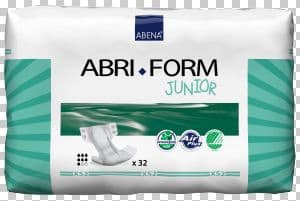
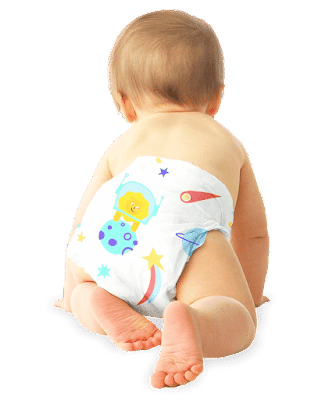
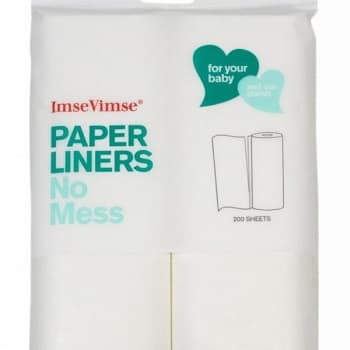
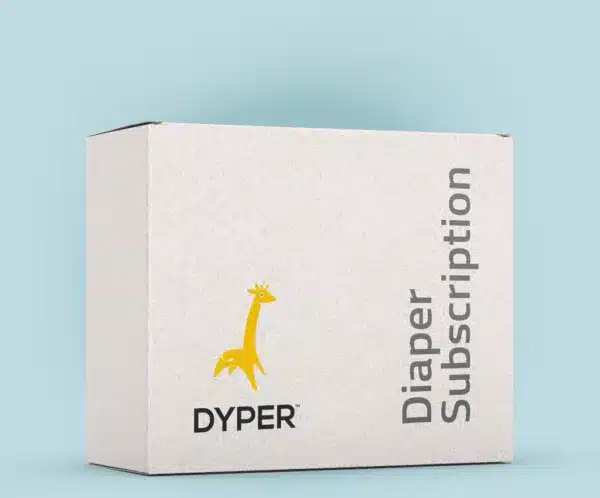
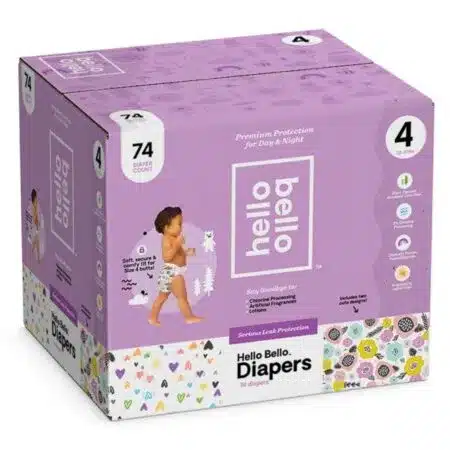
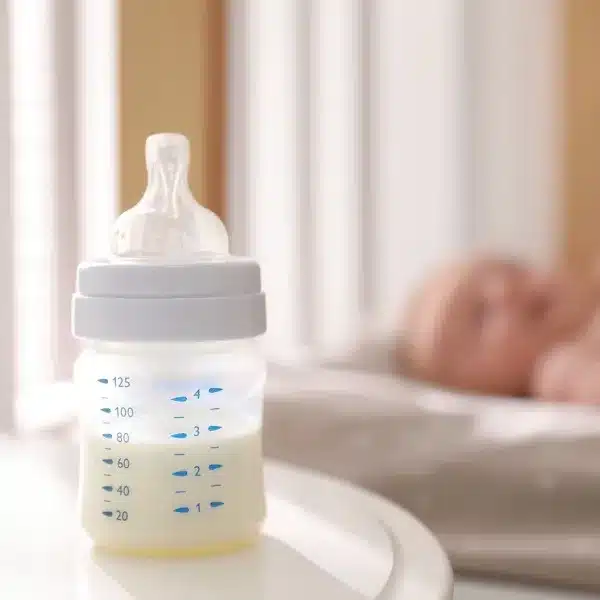
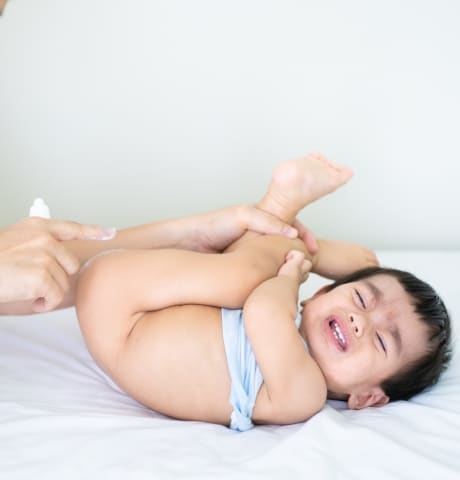
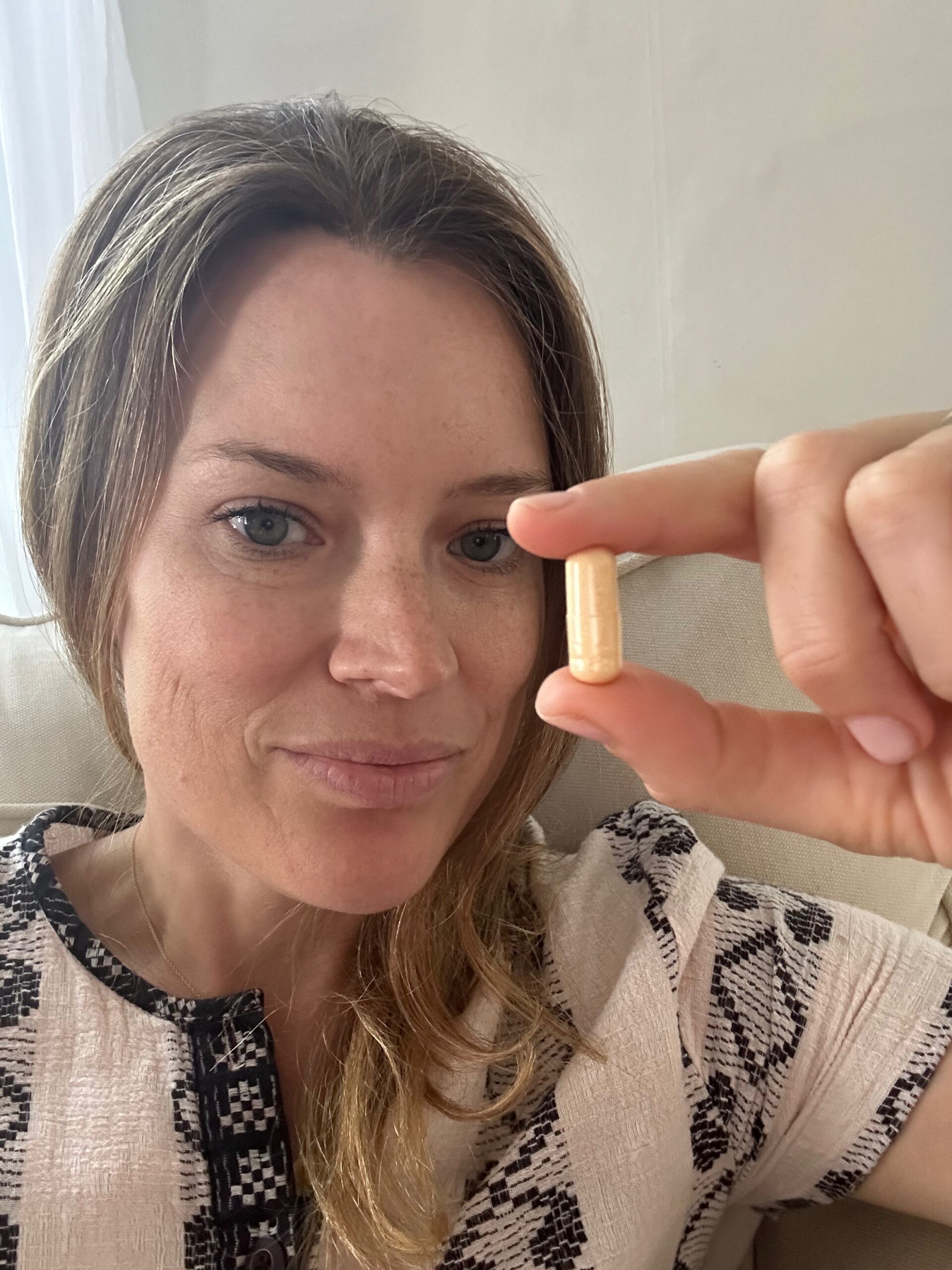
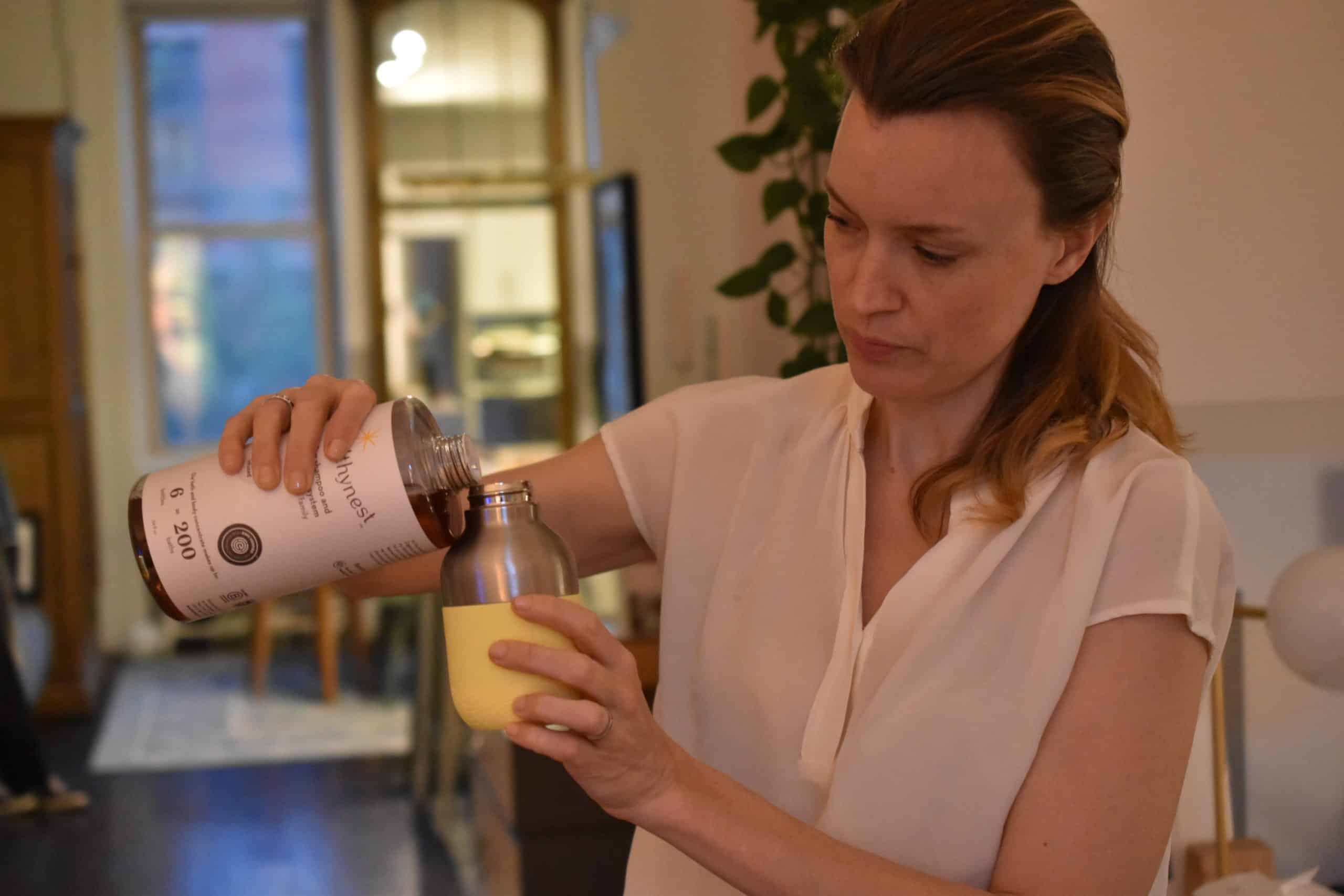
Leave a Reply
You must be logged in to post a comment.